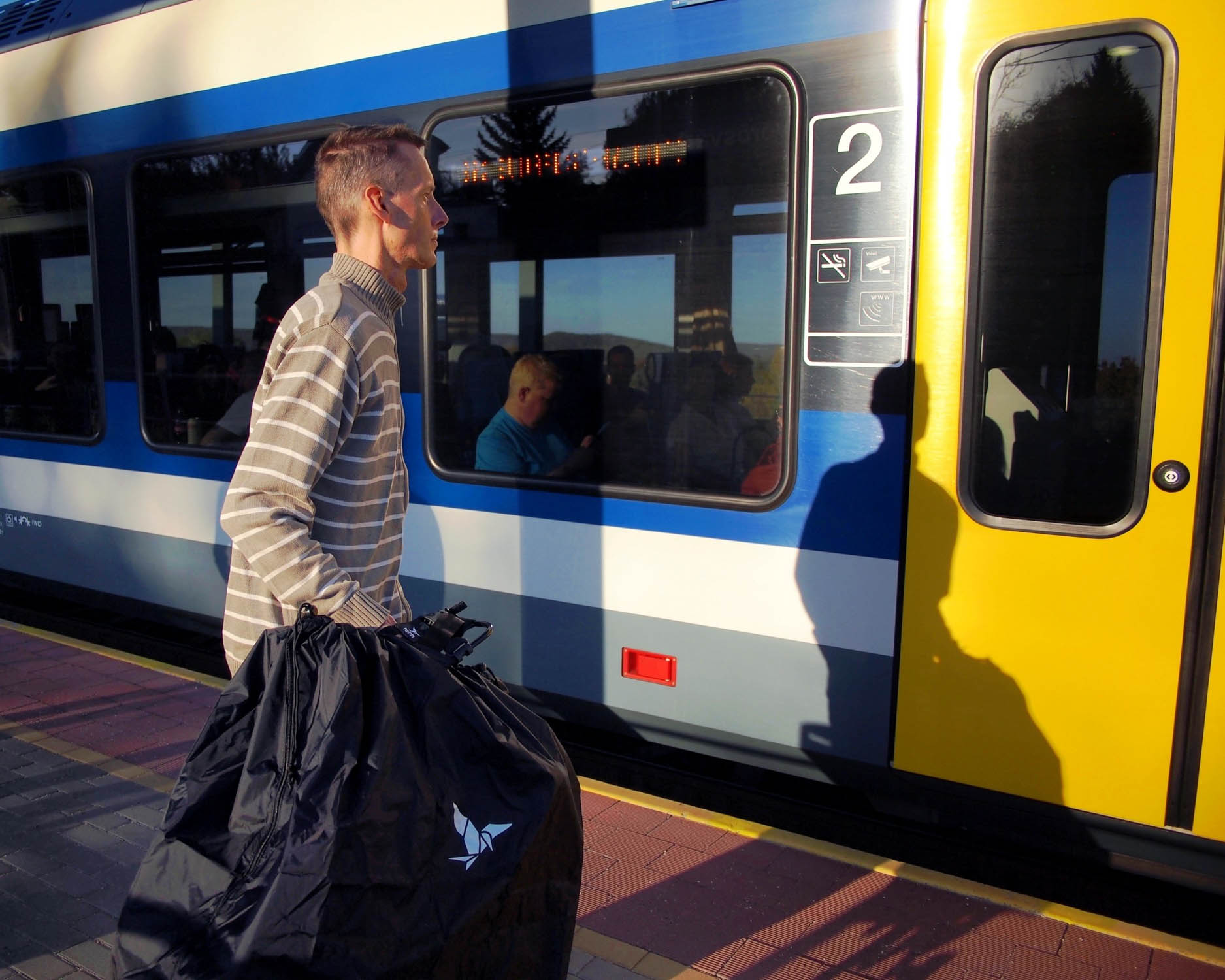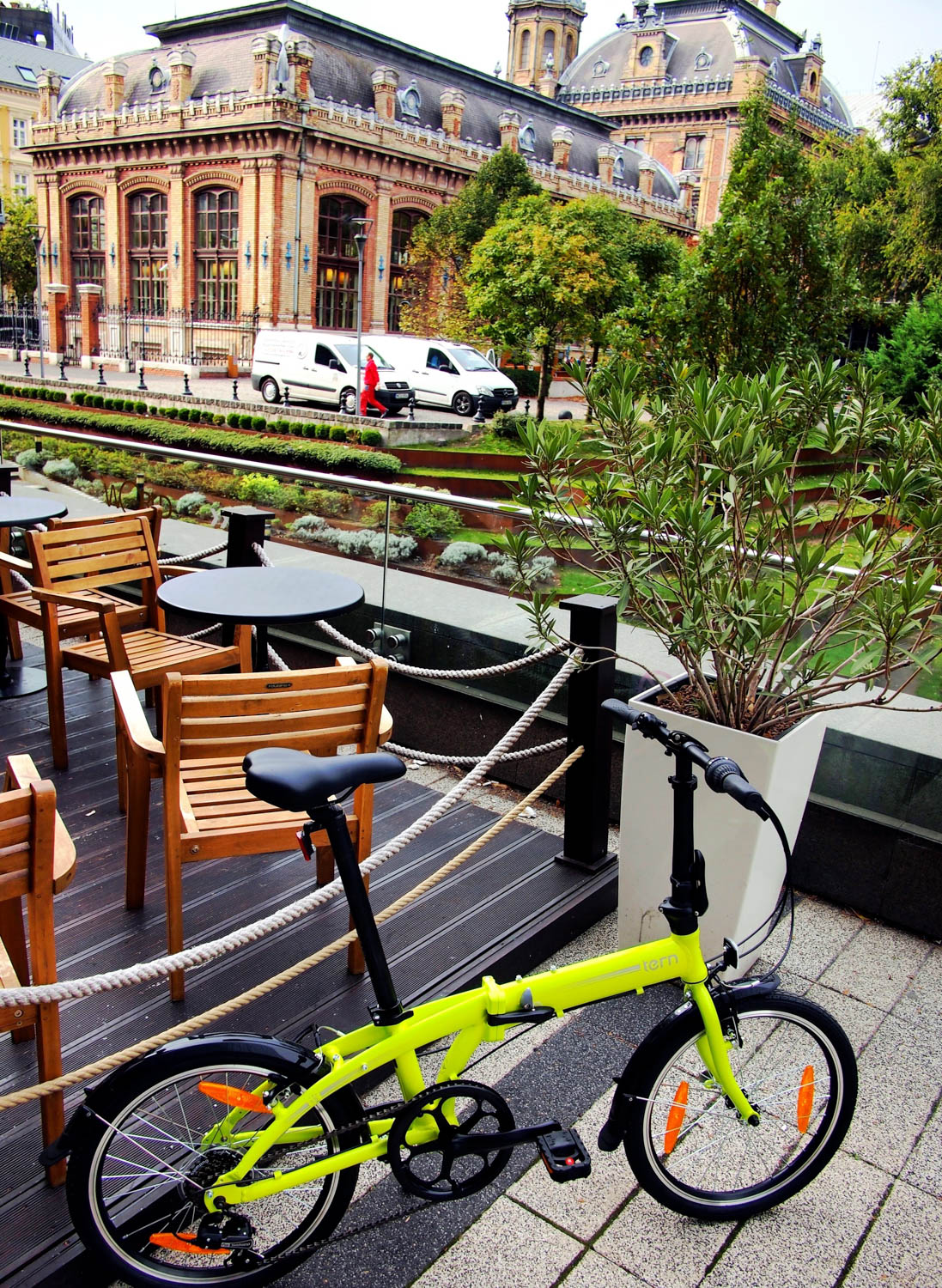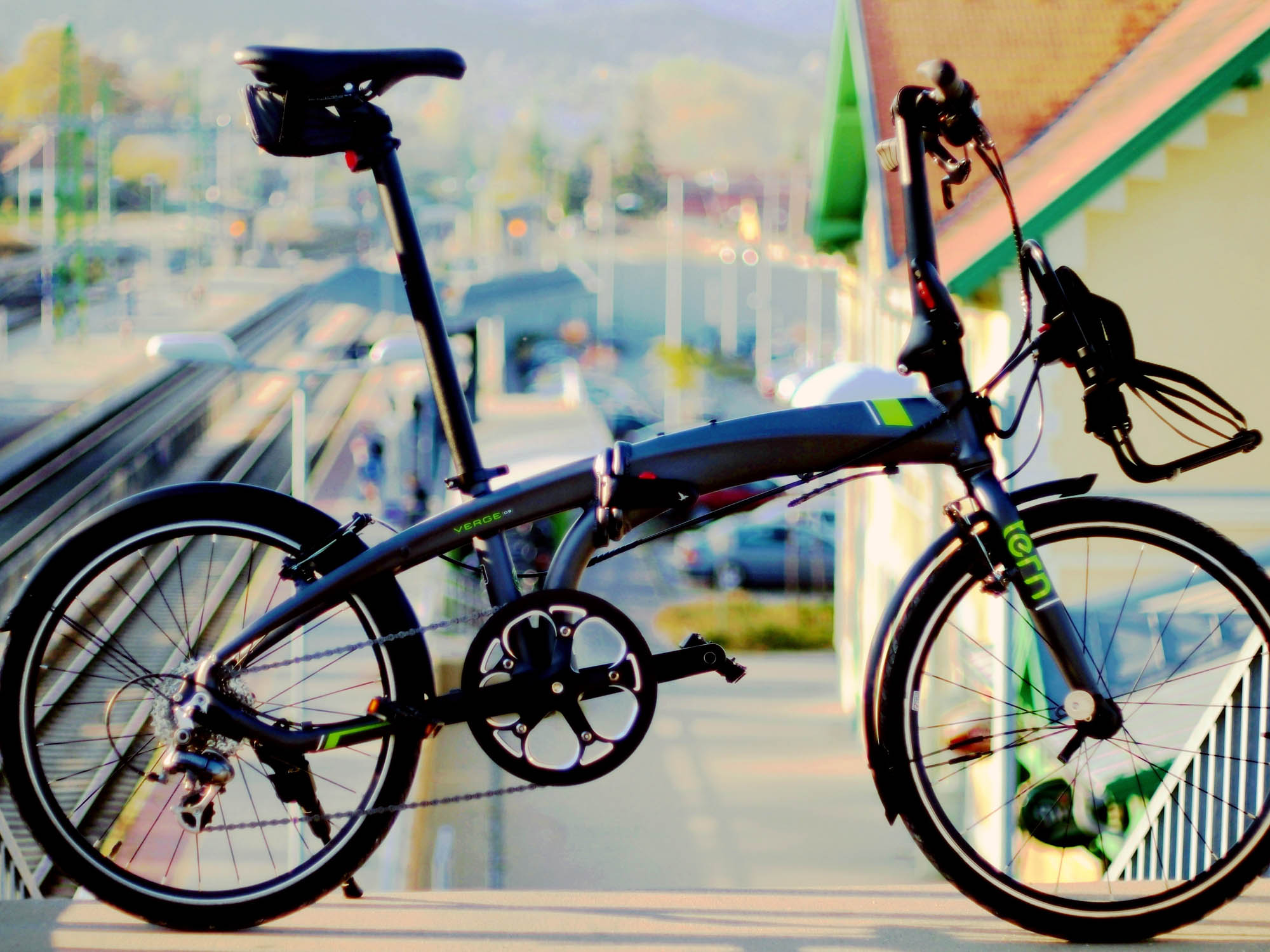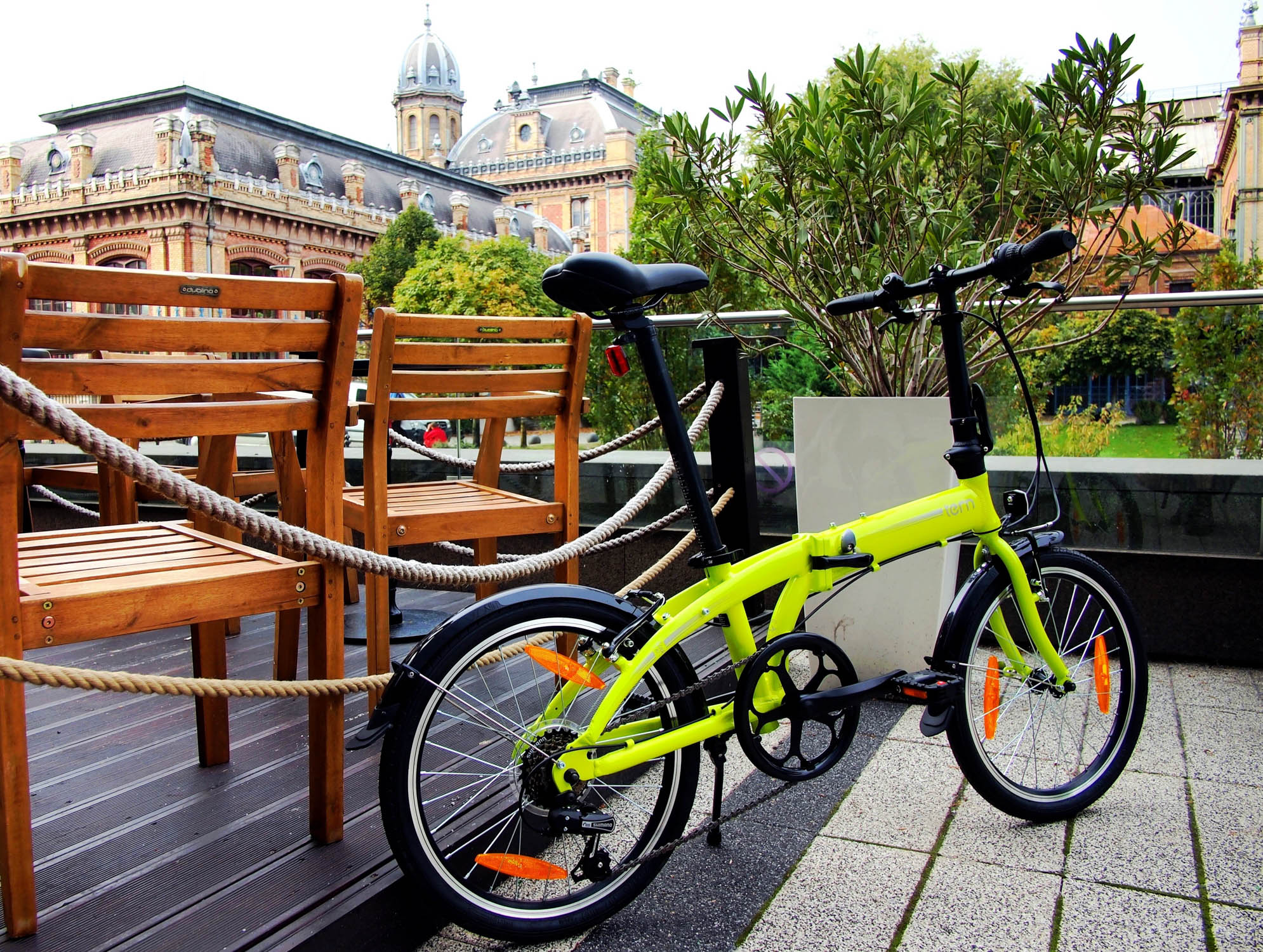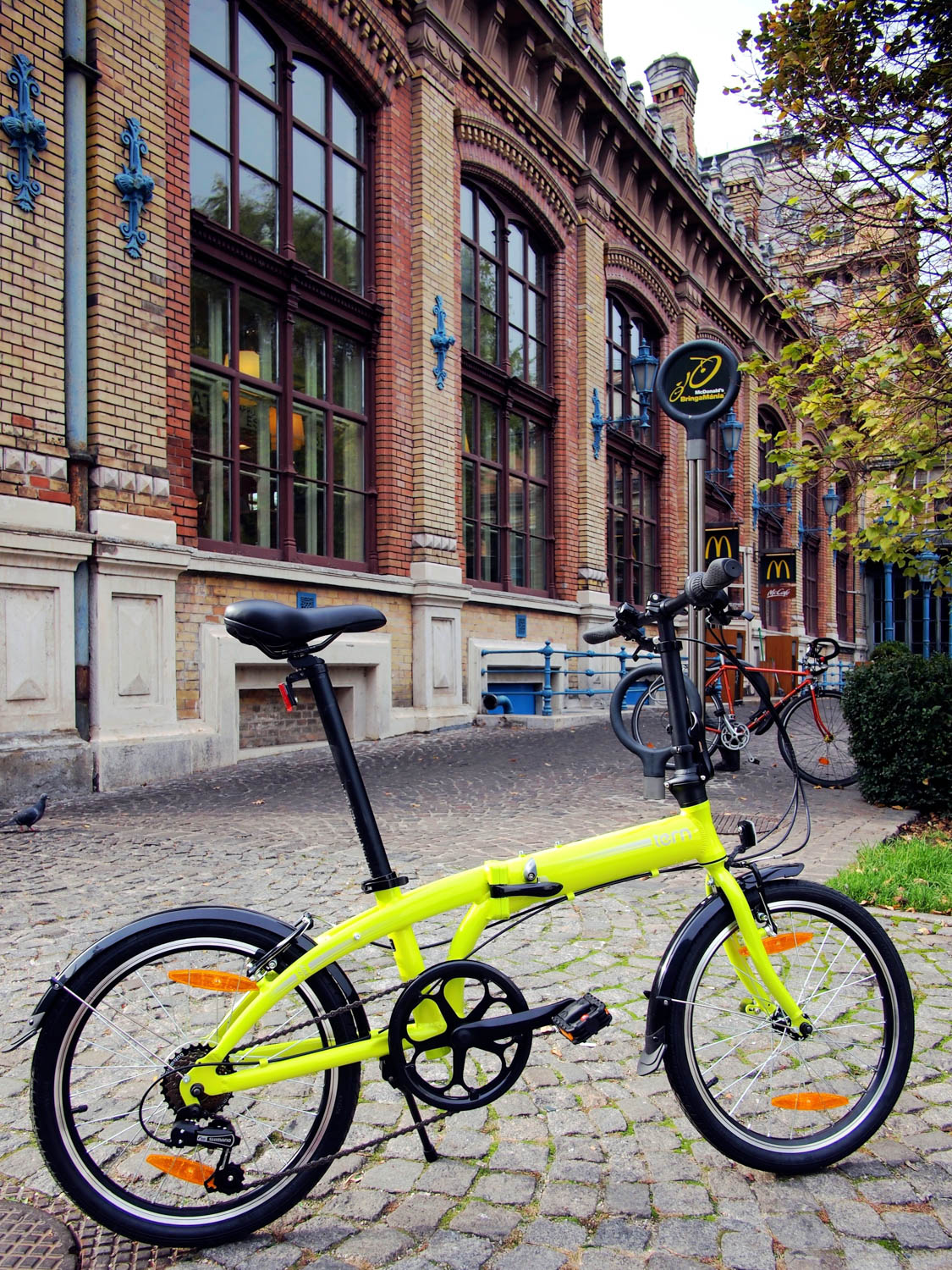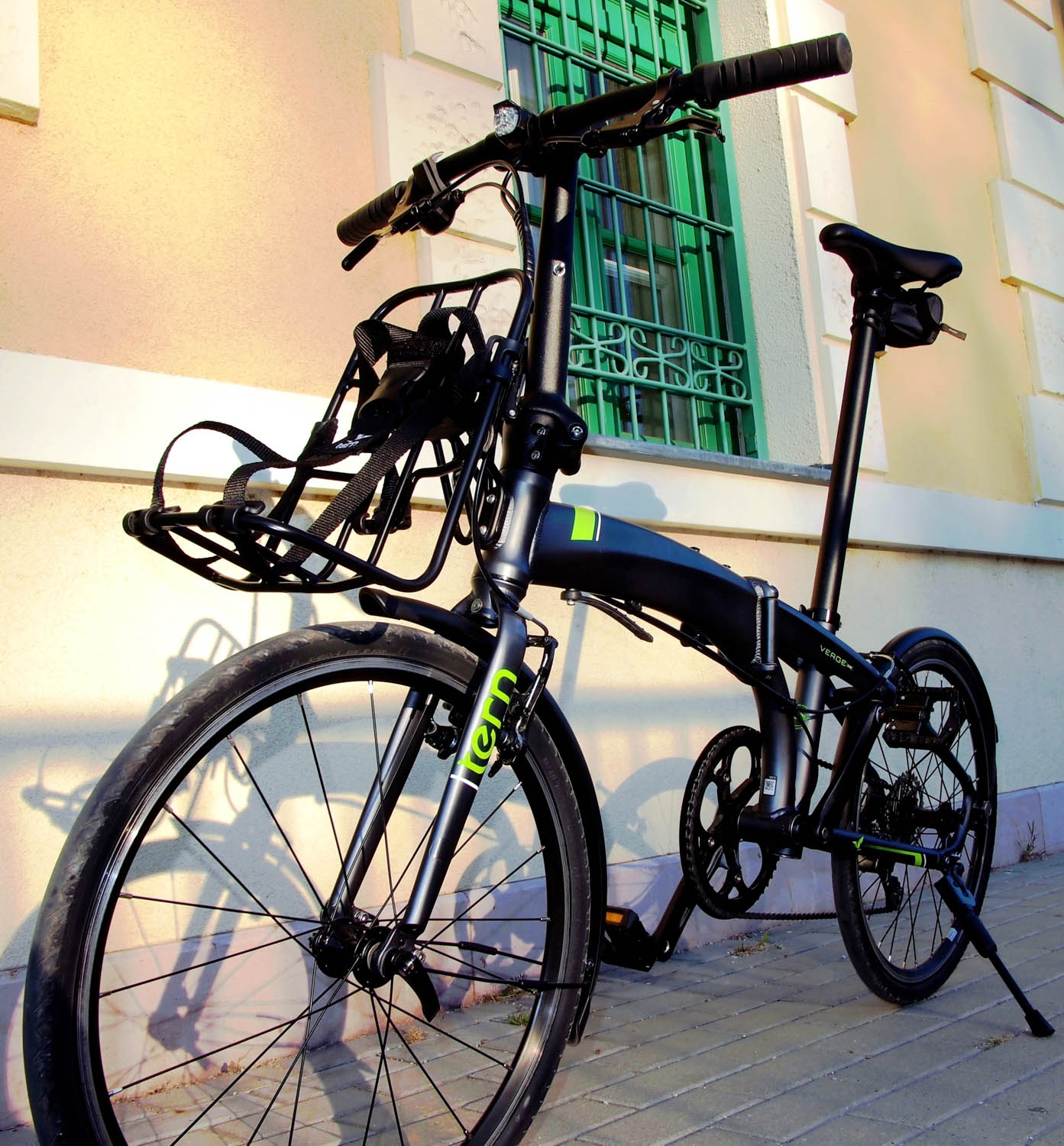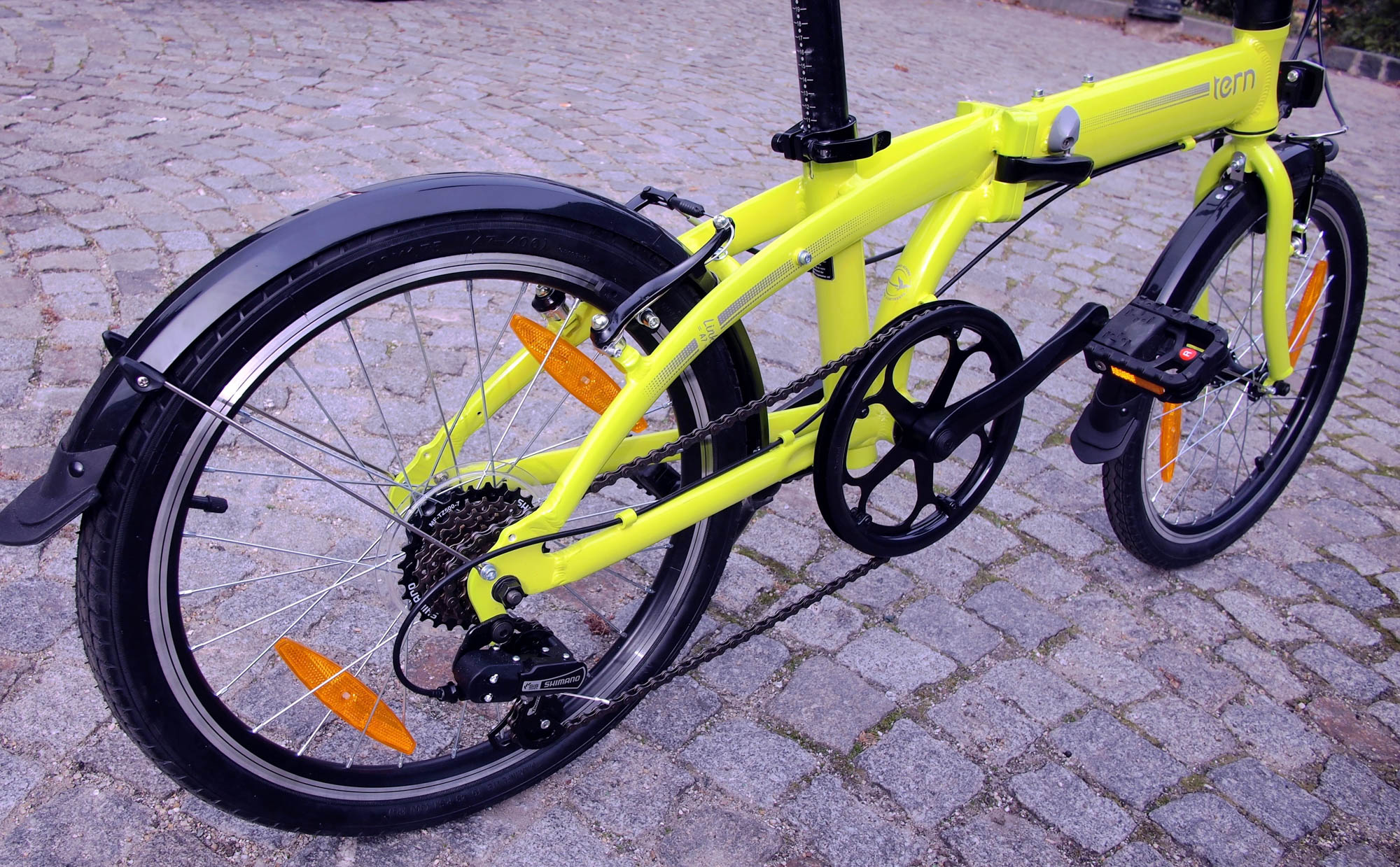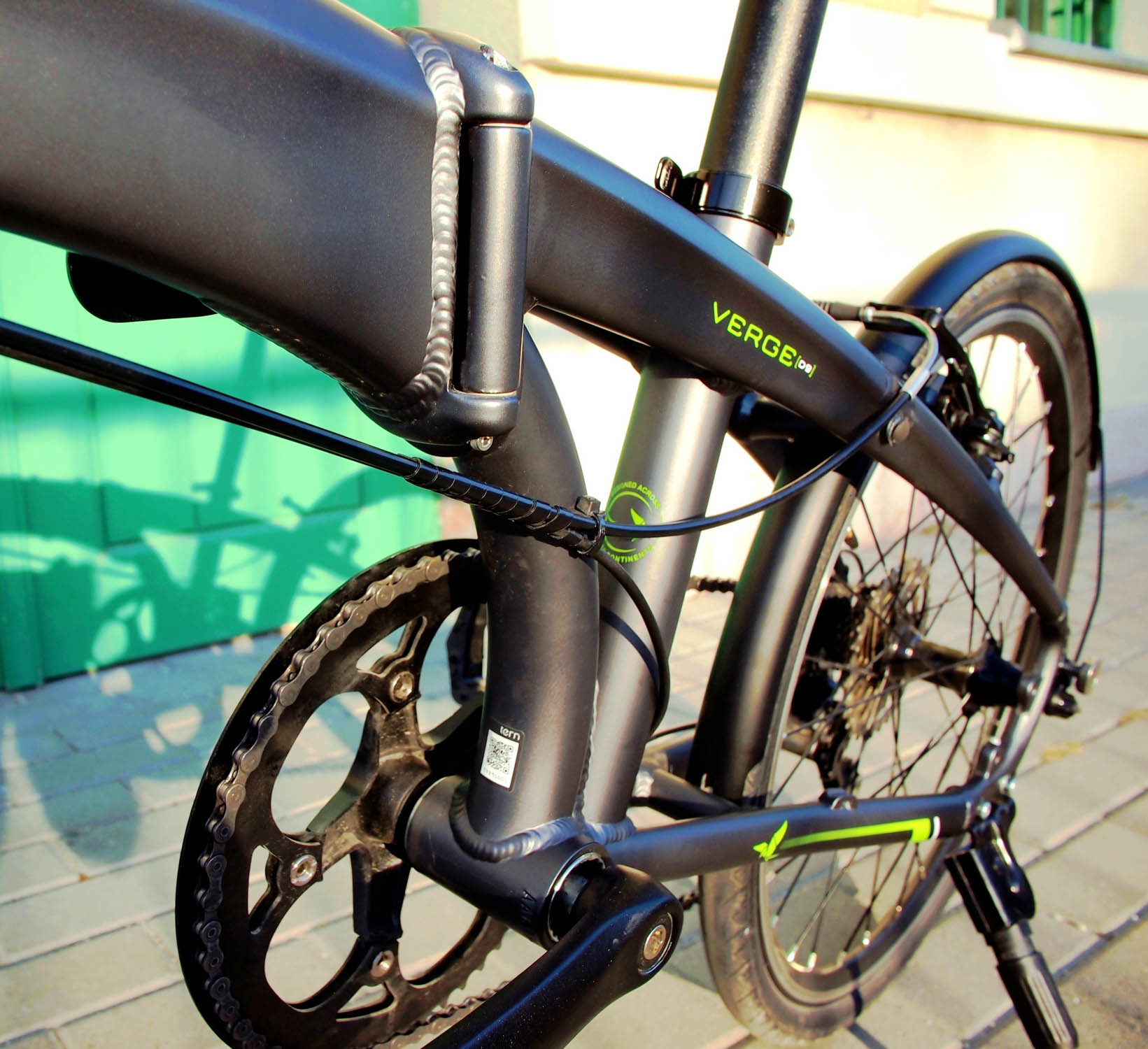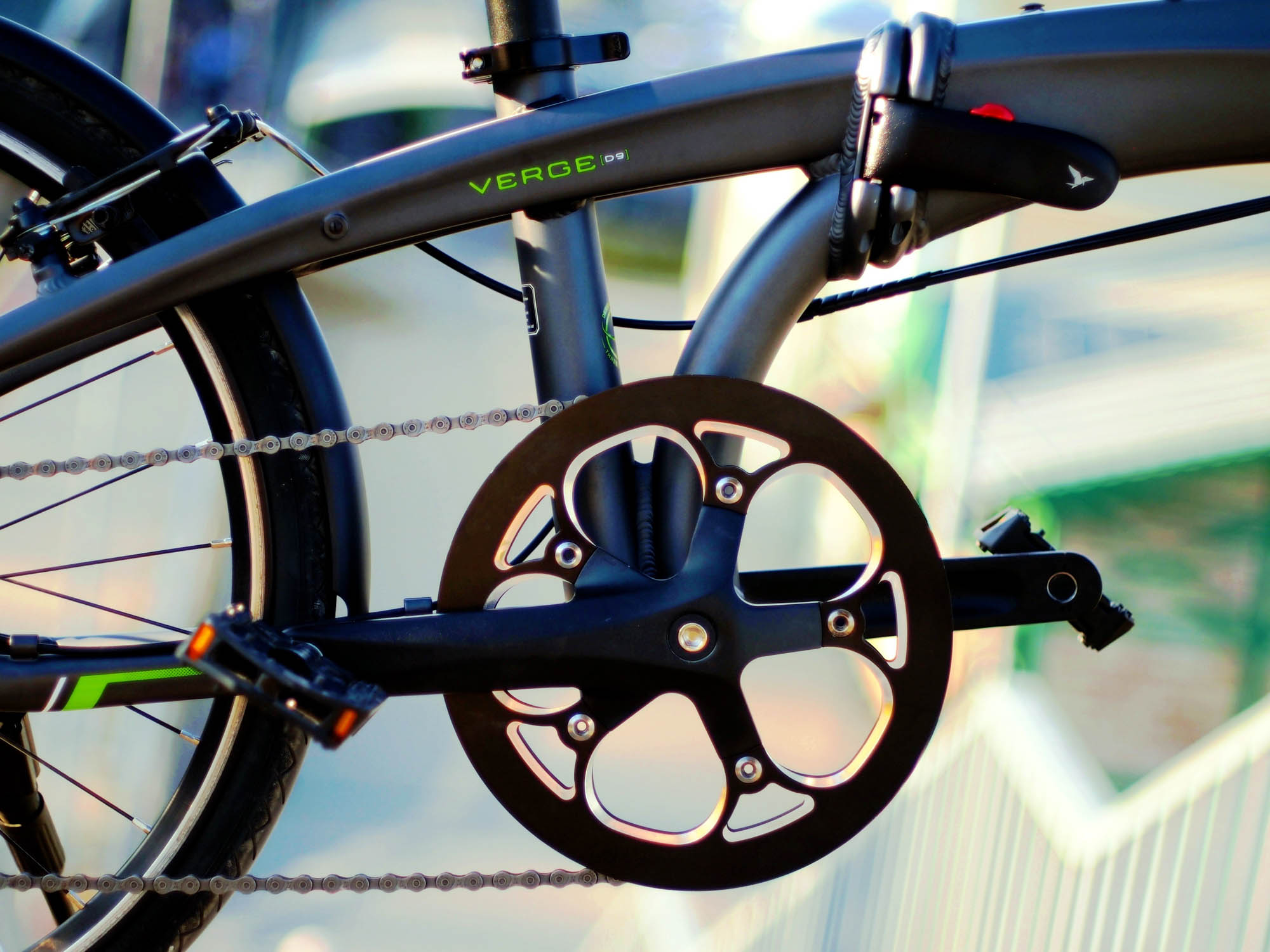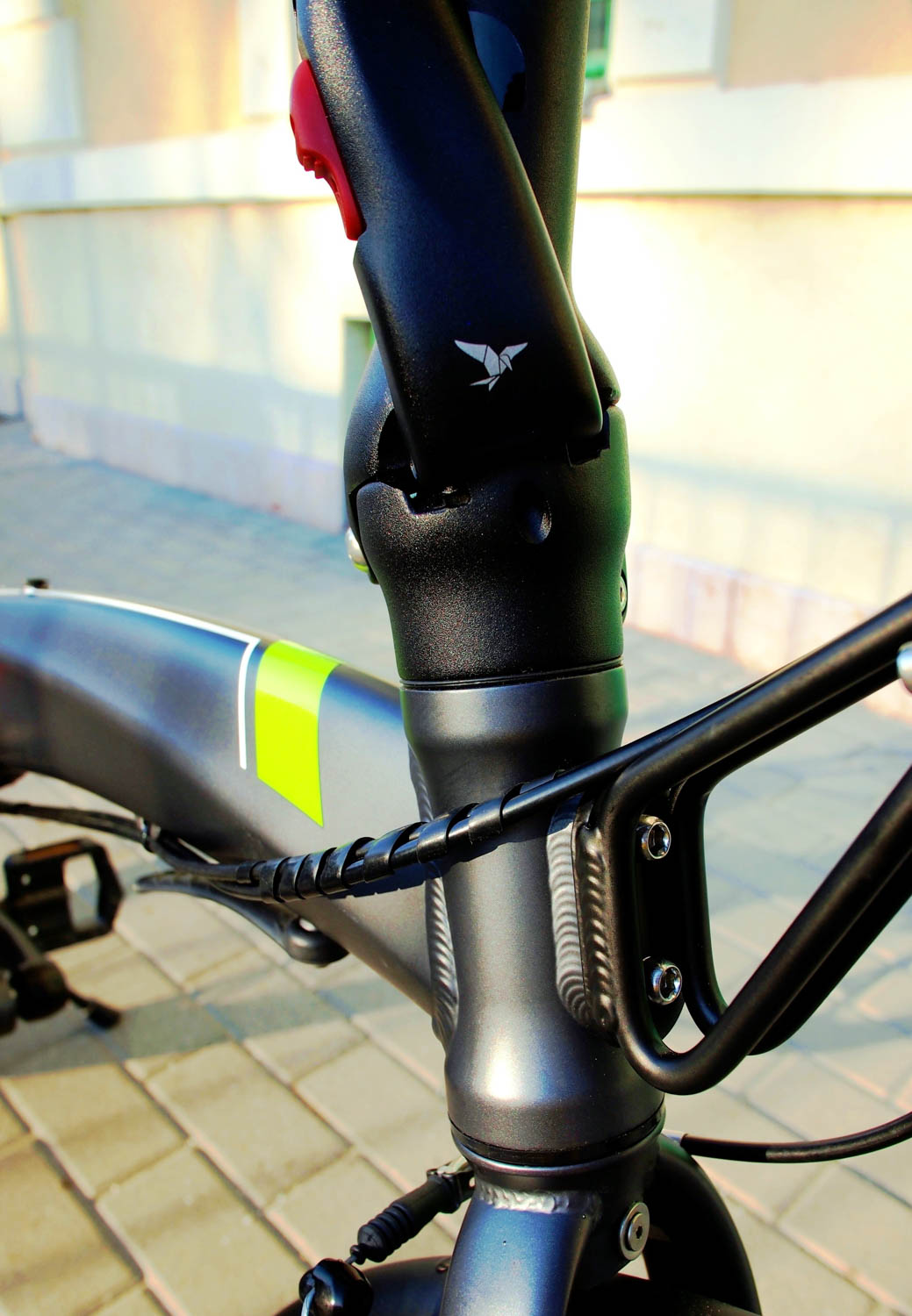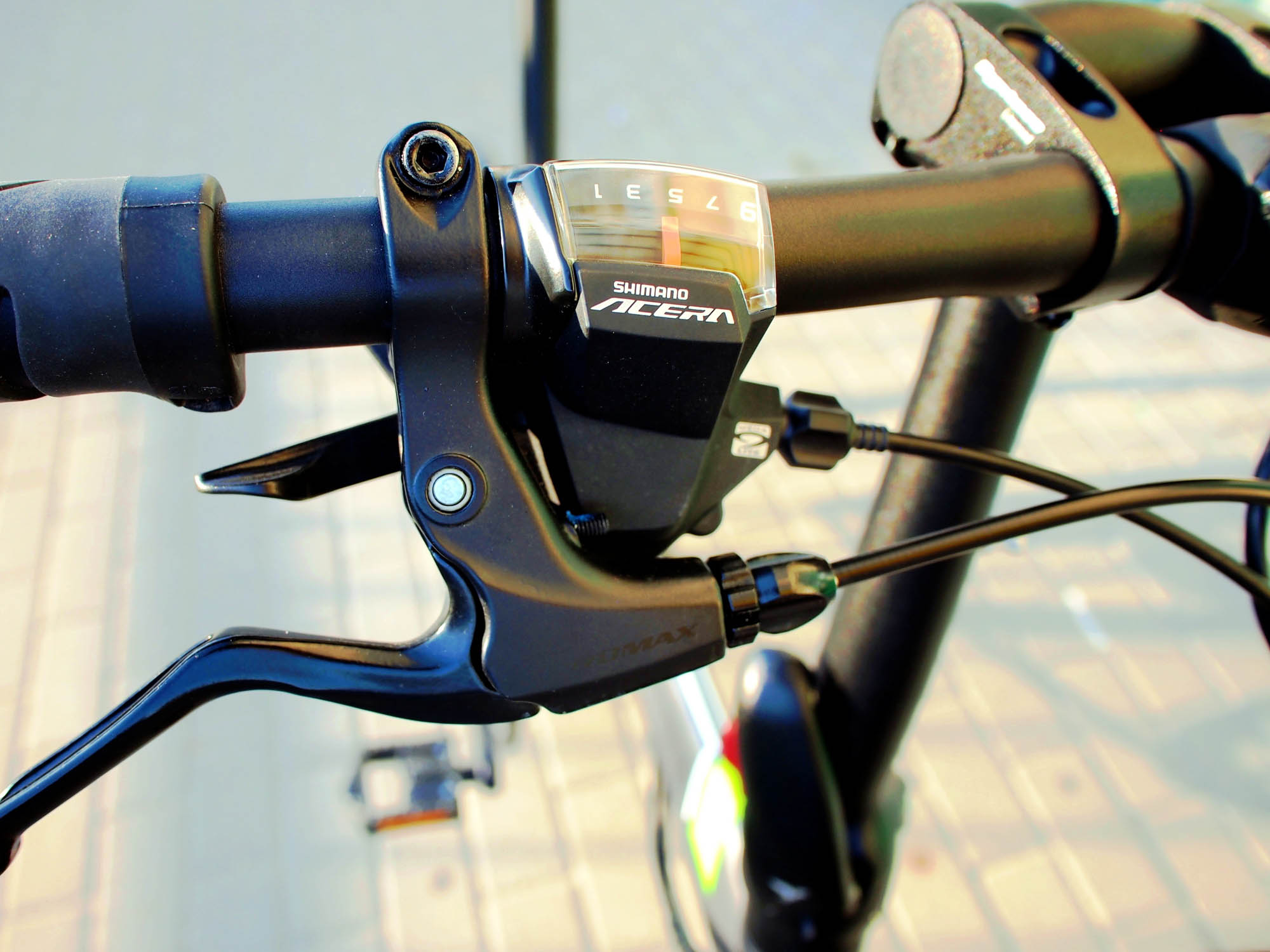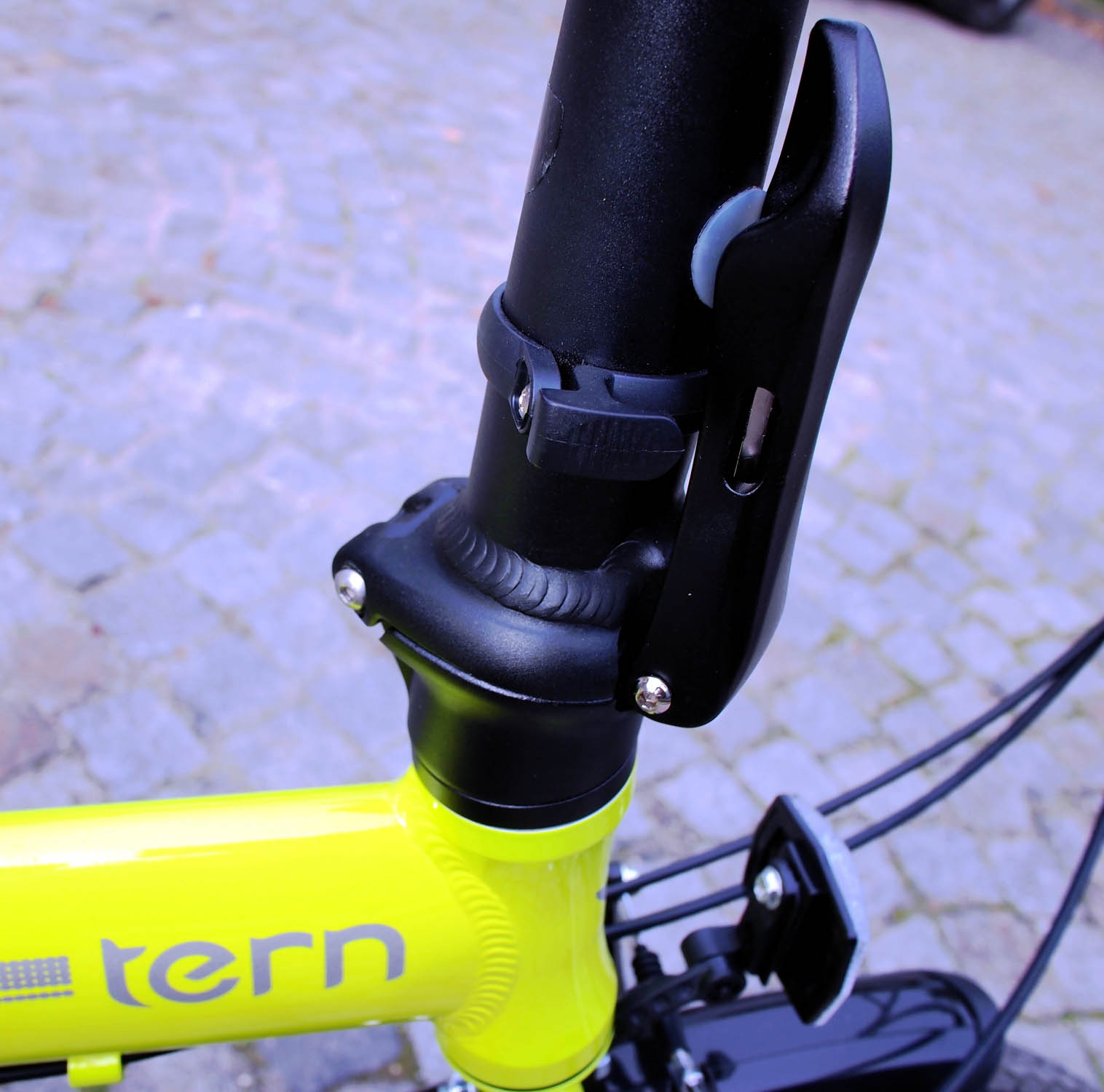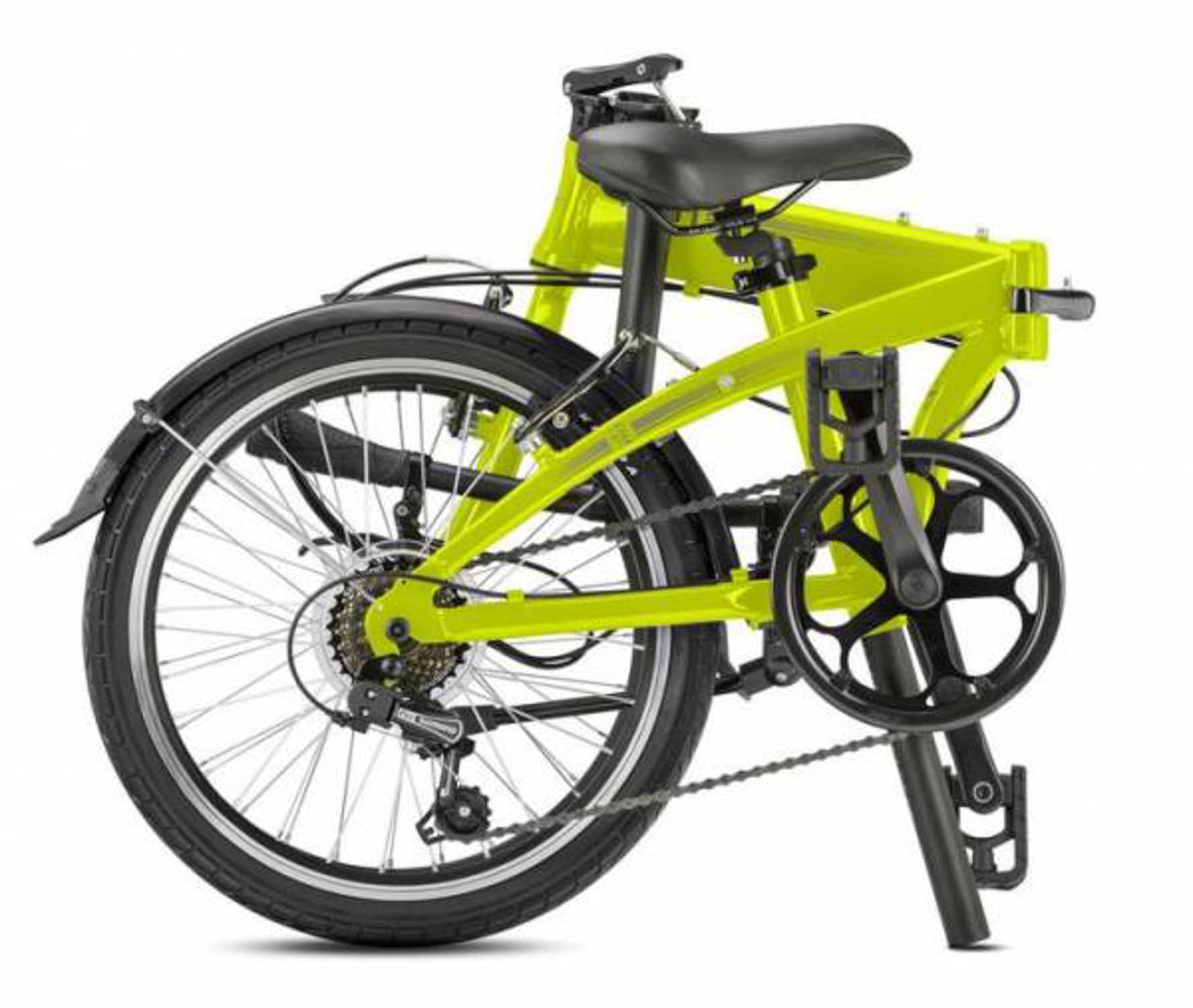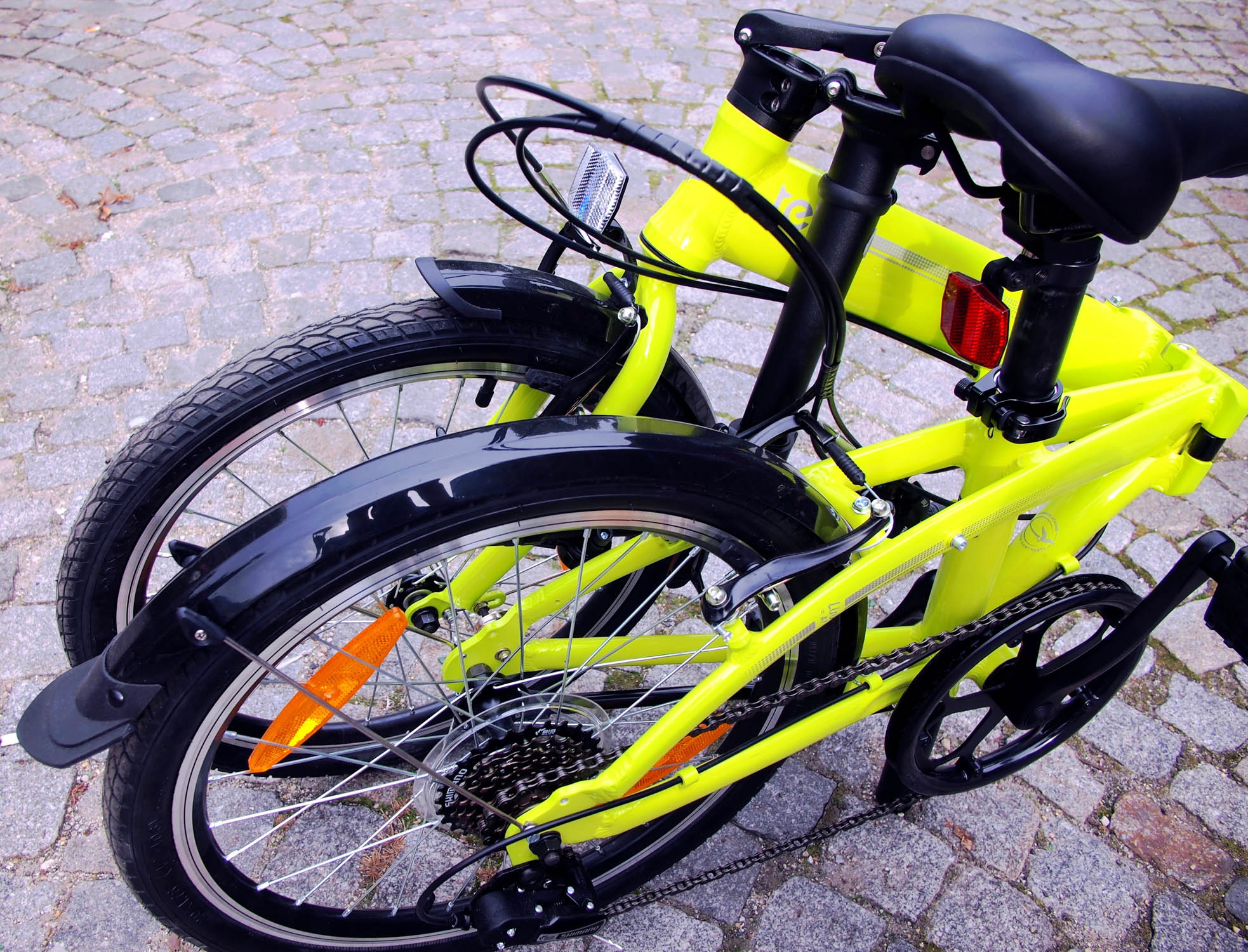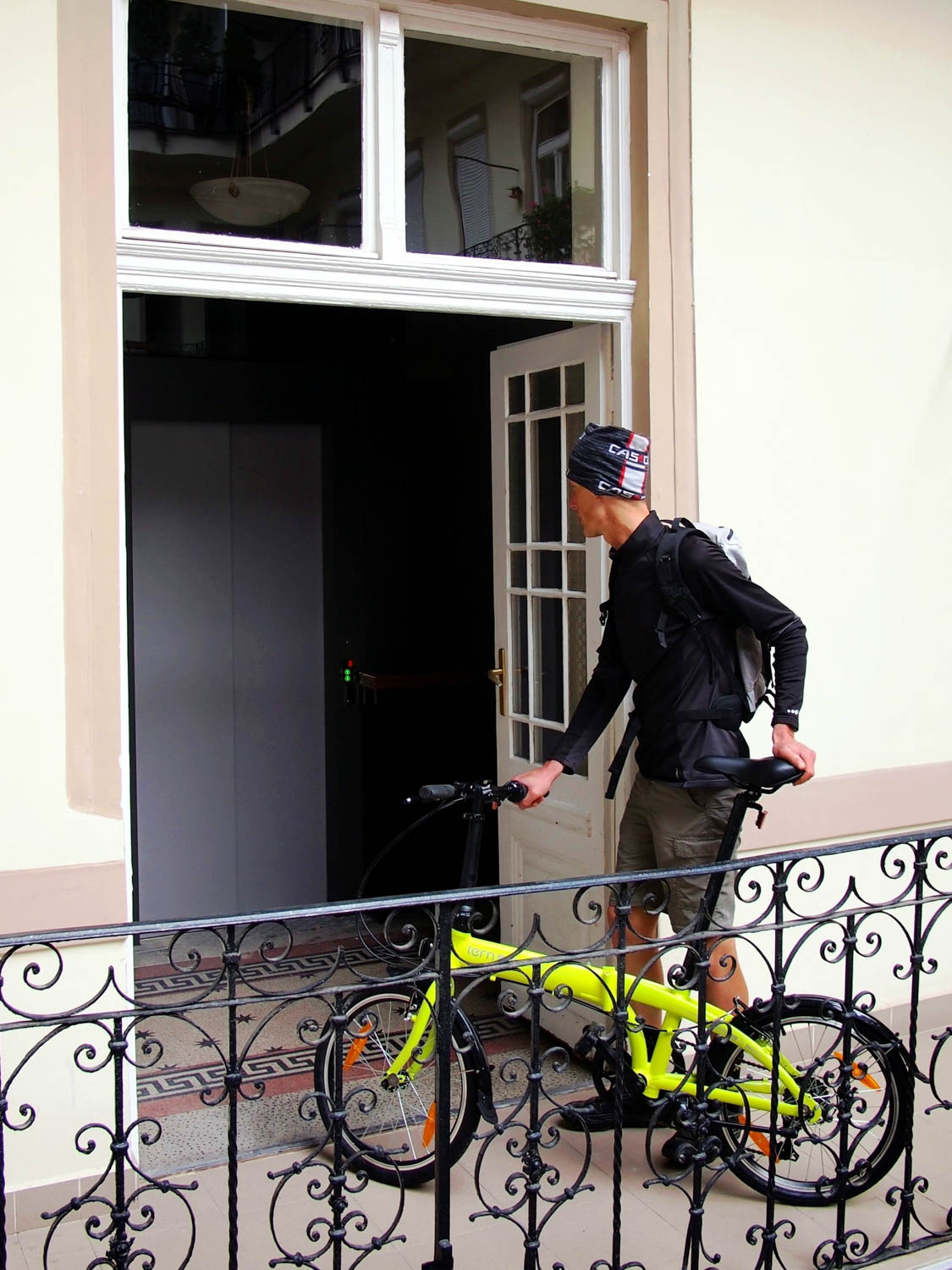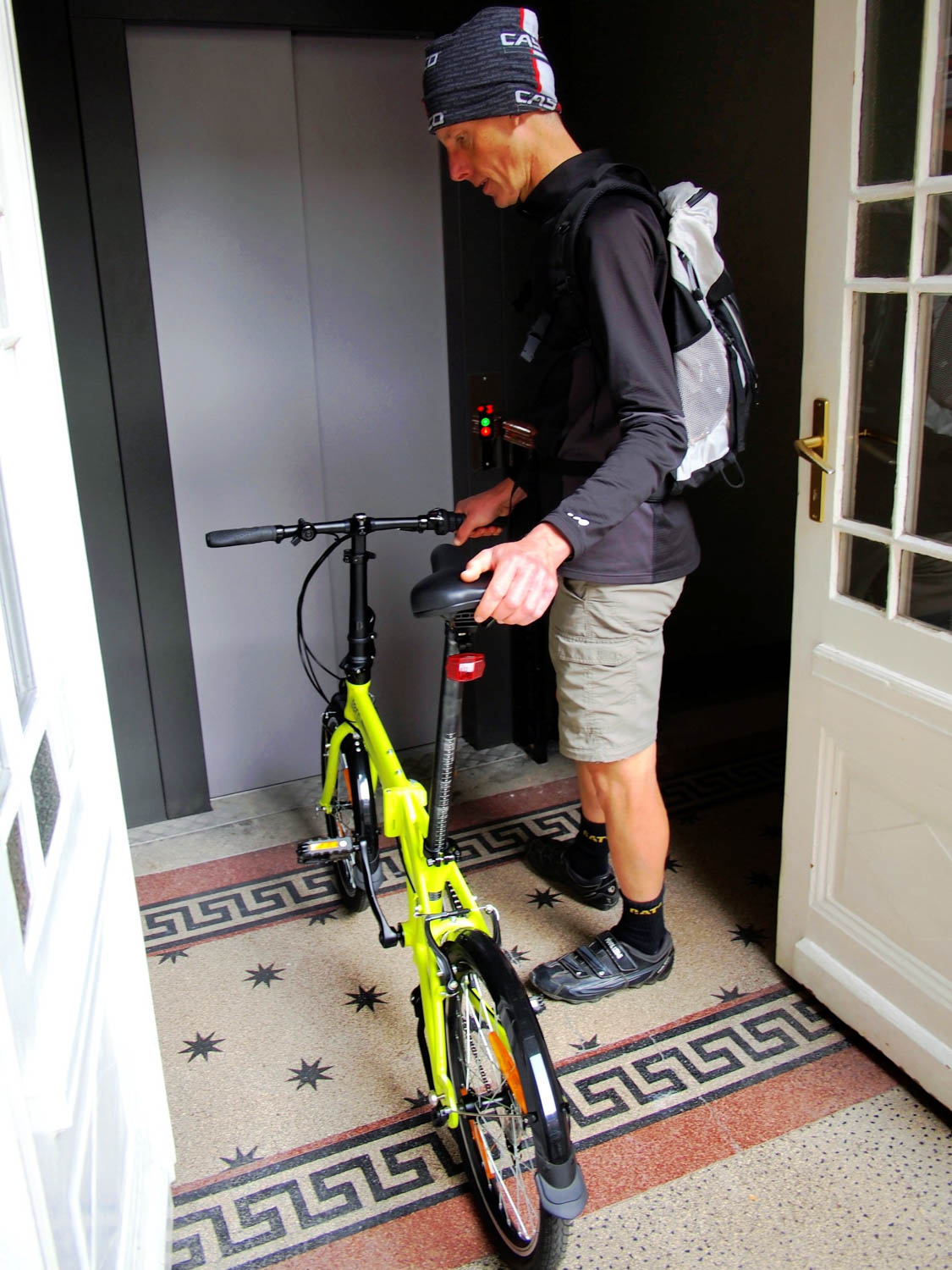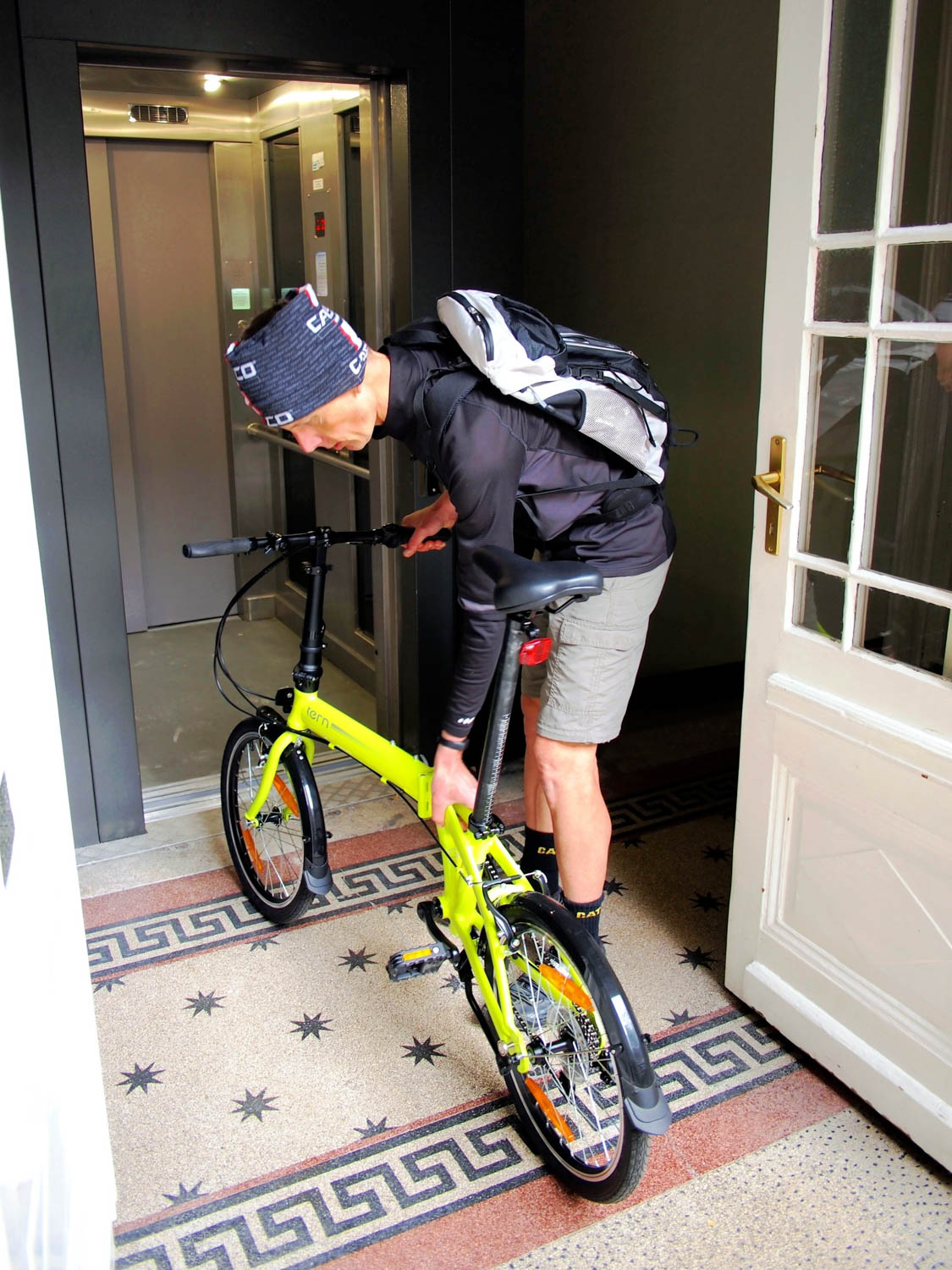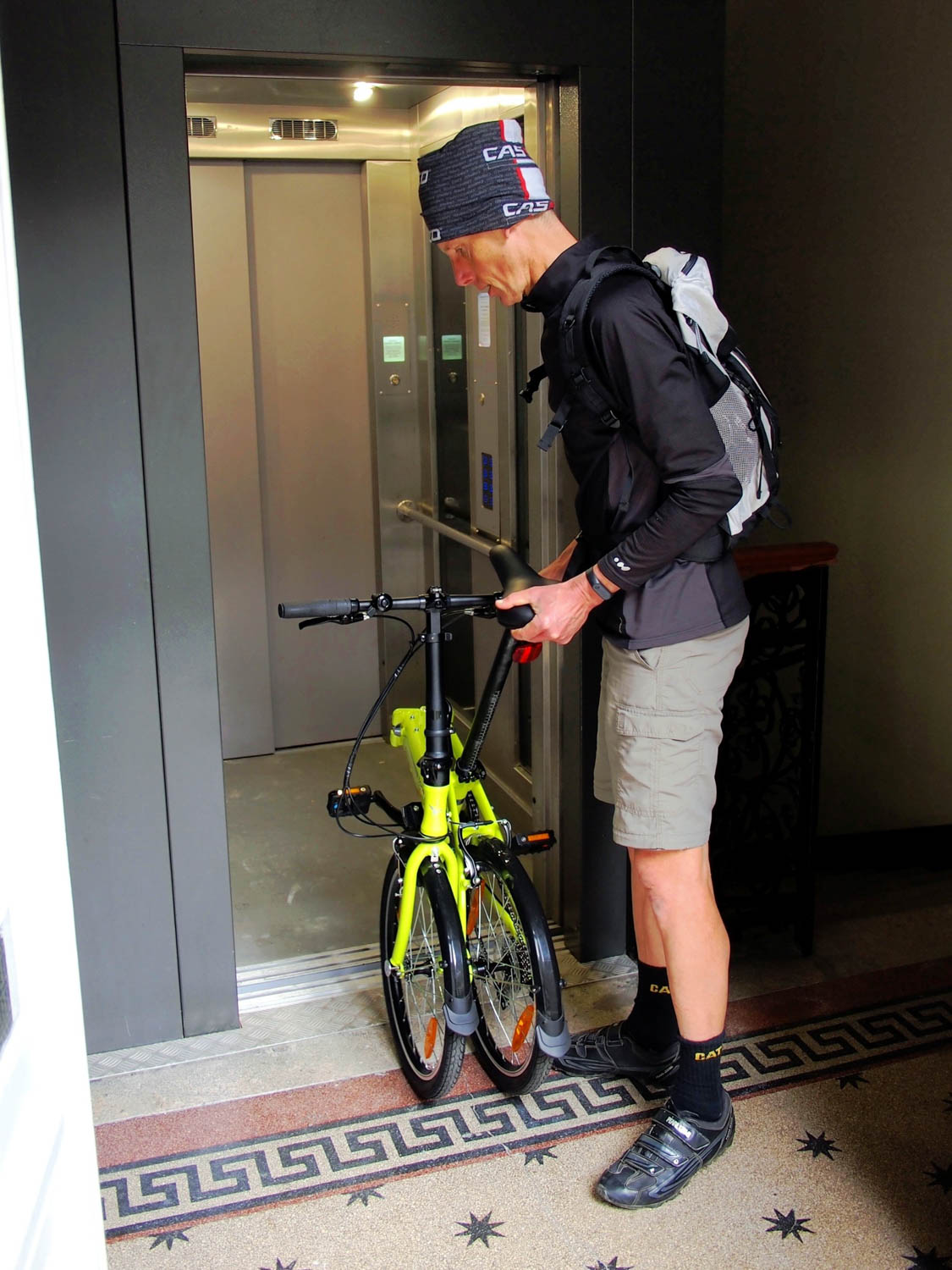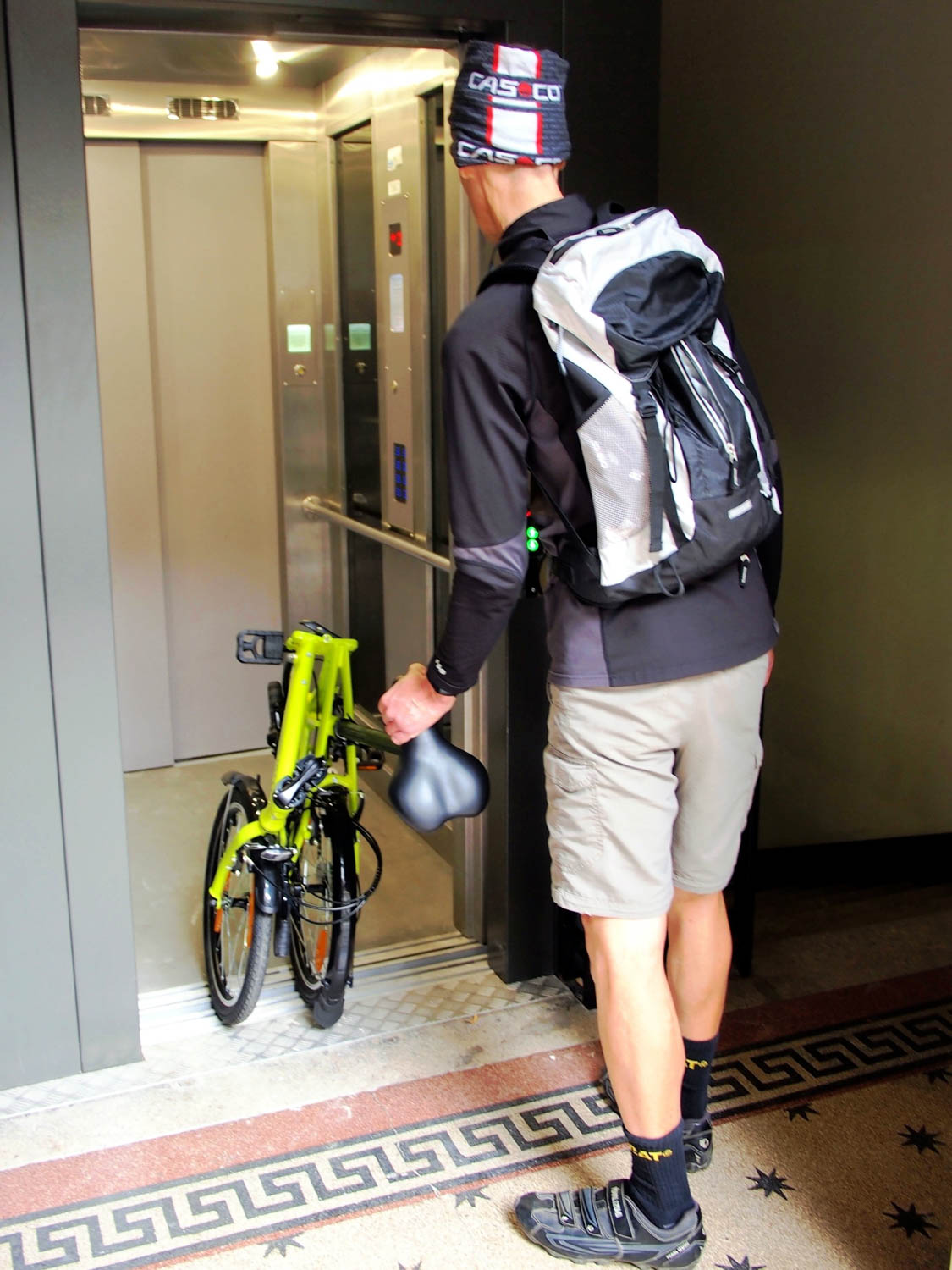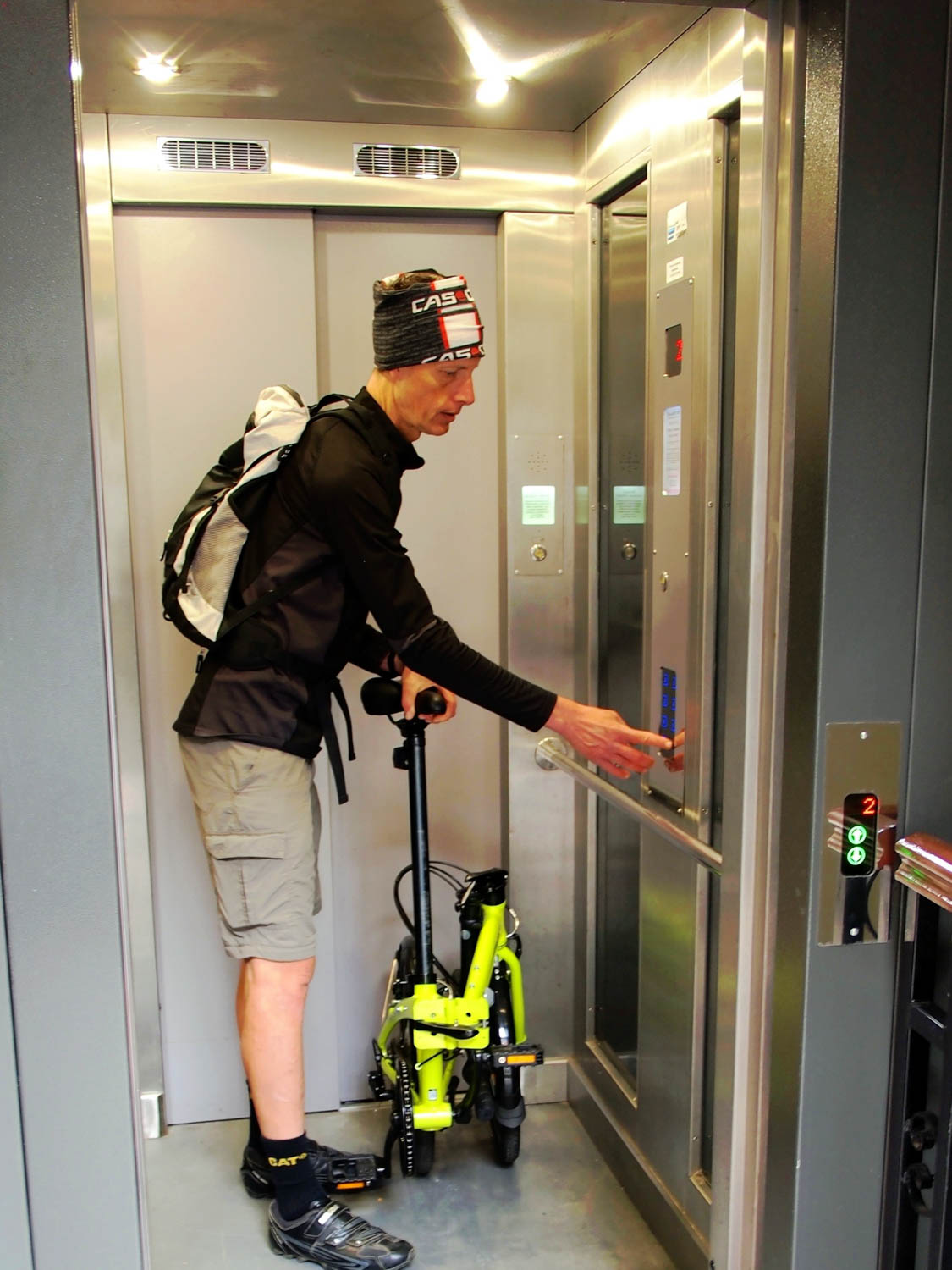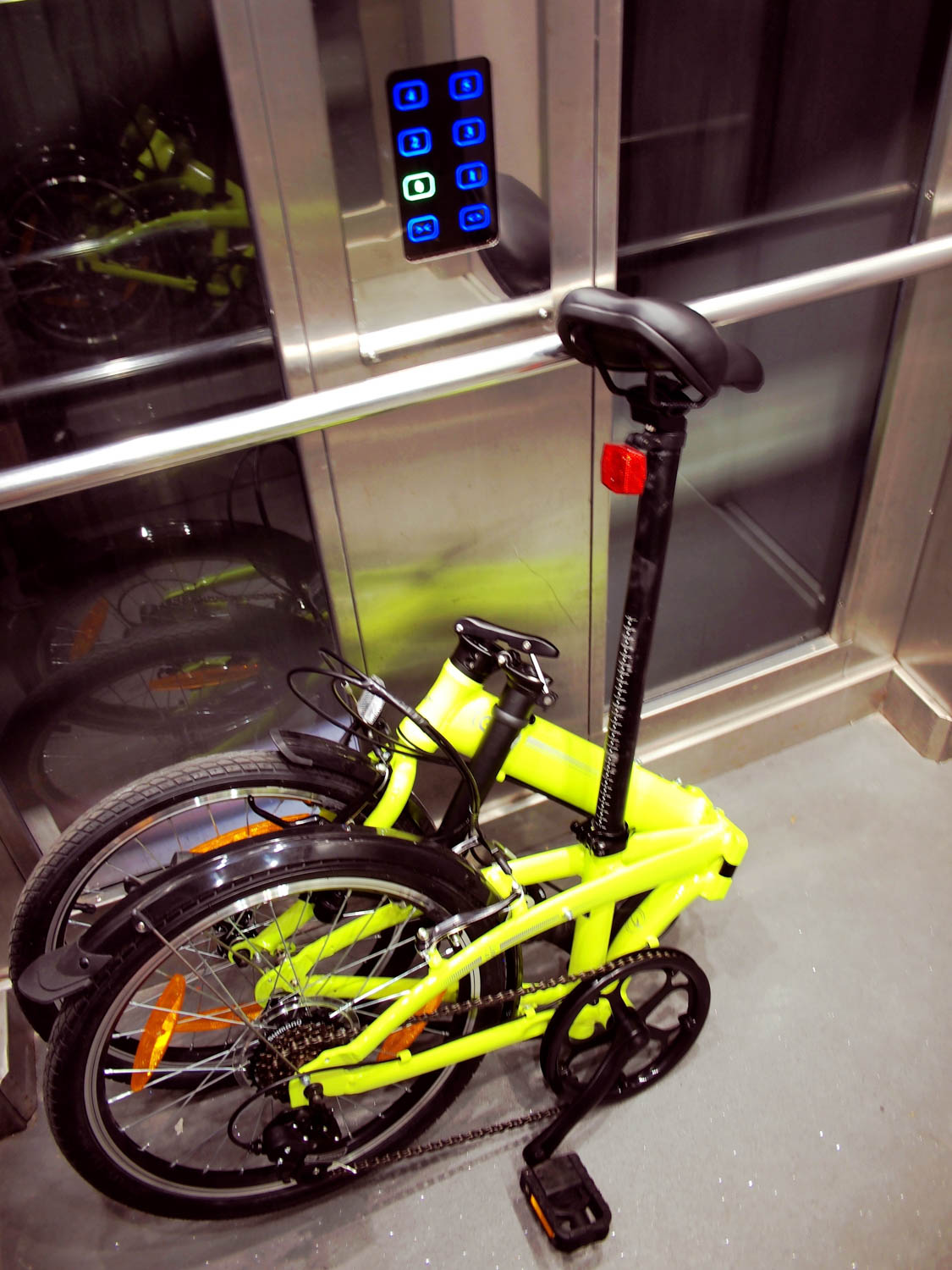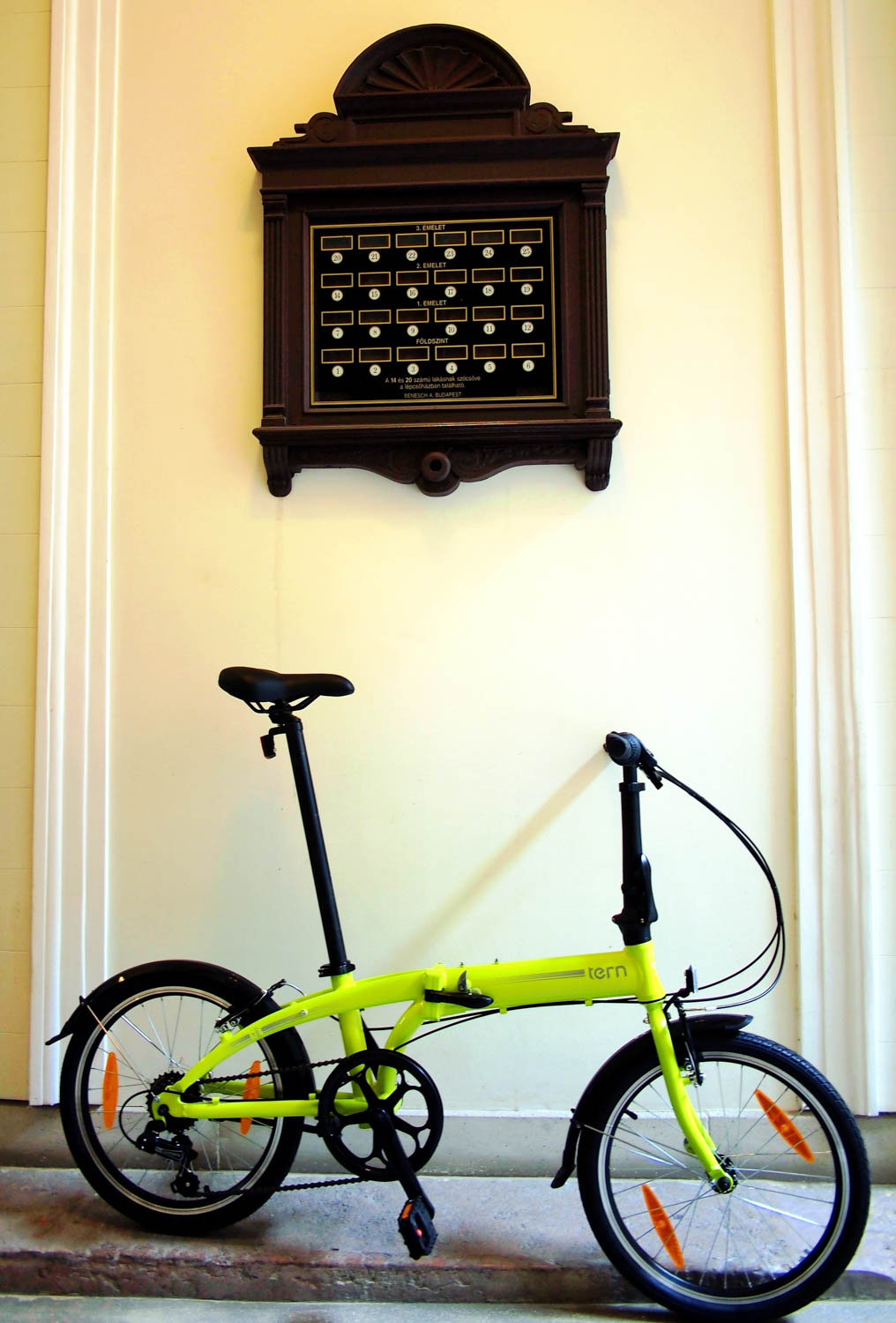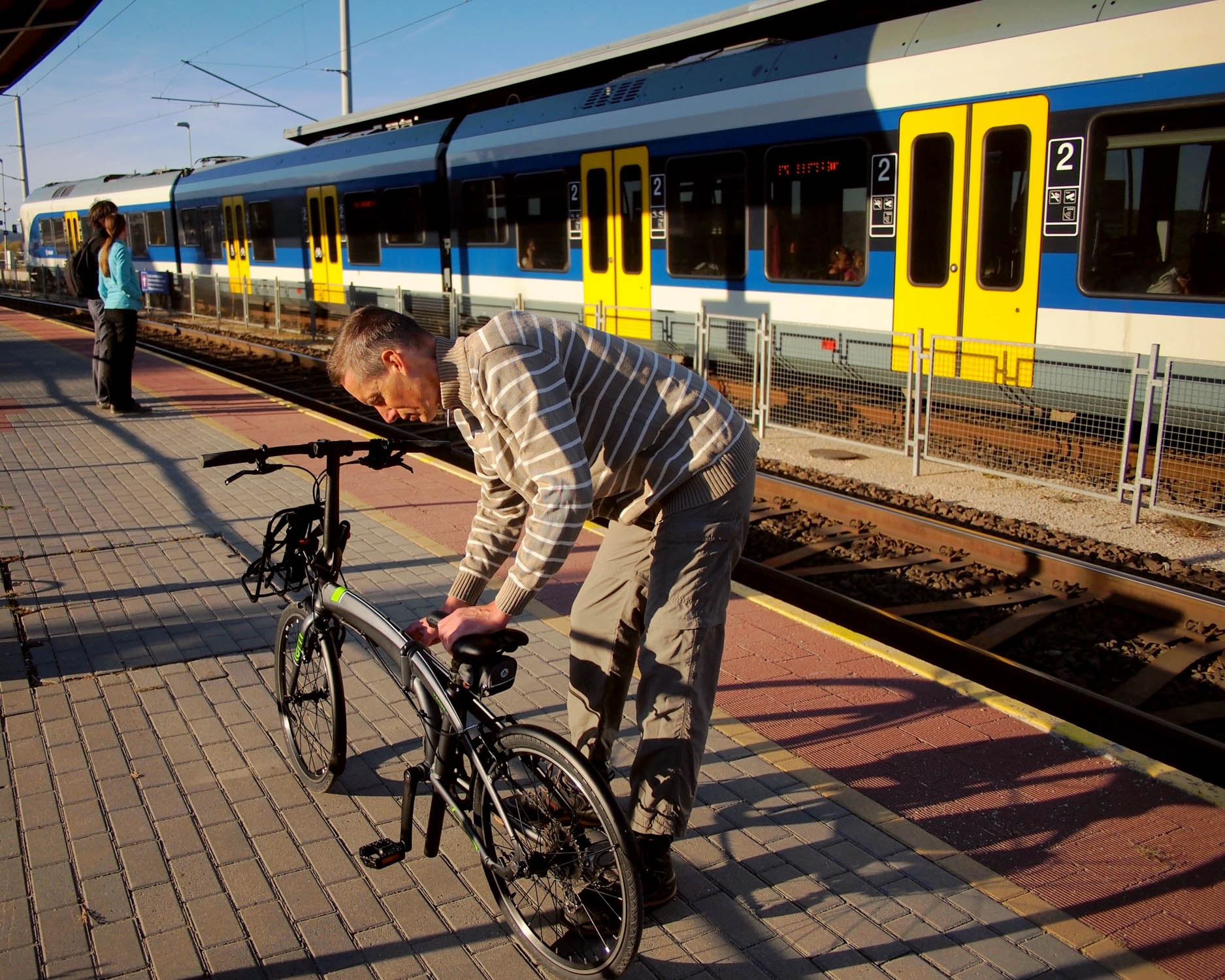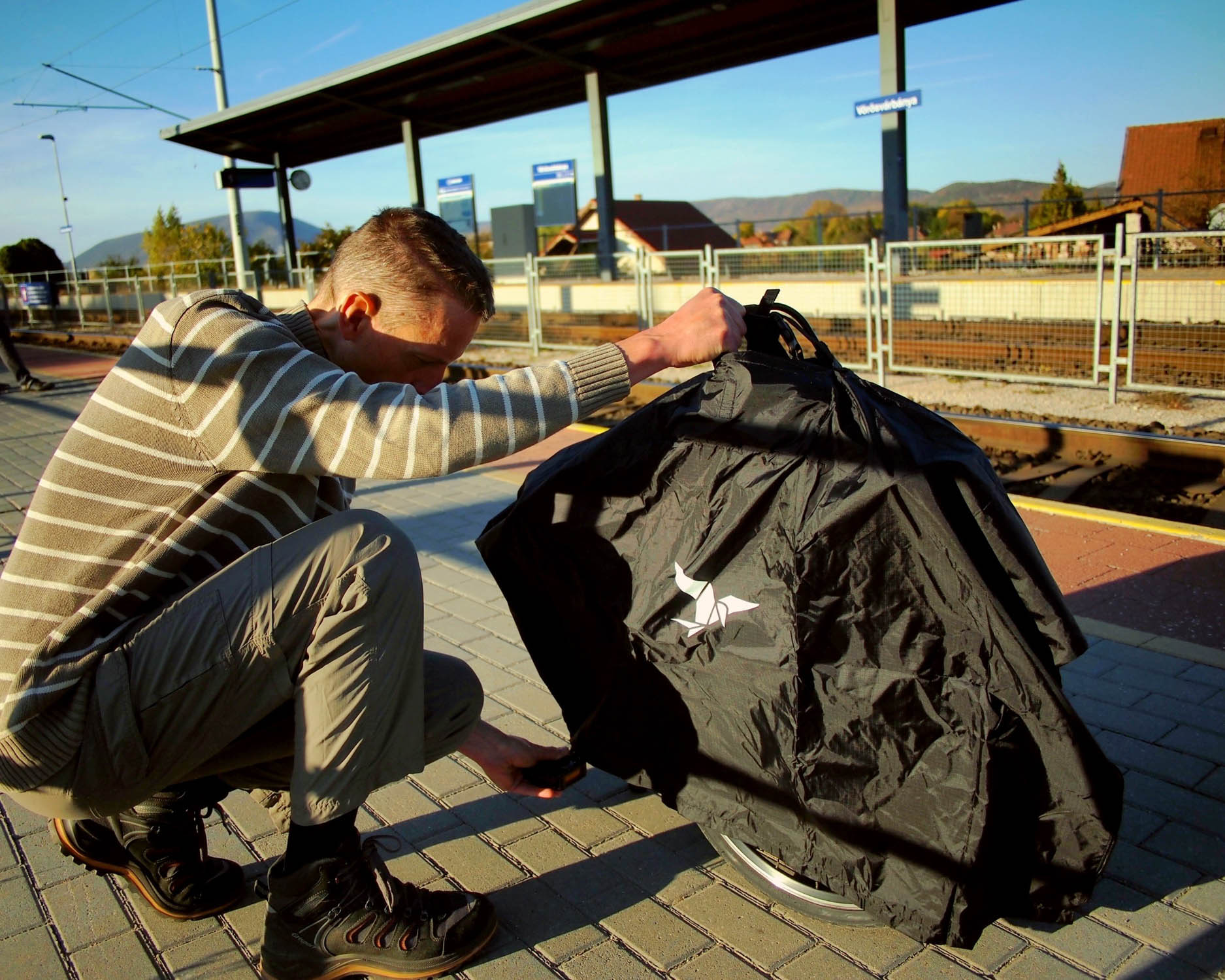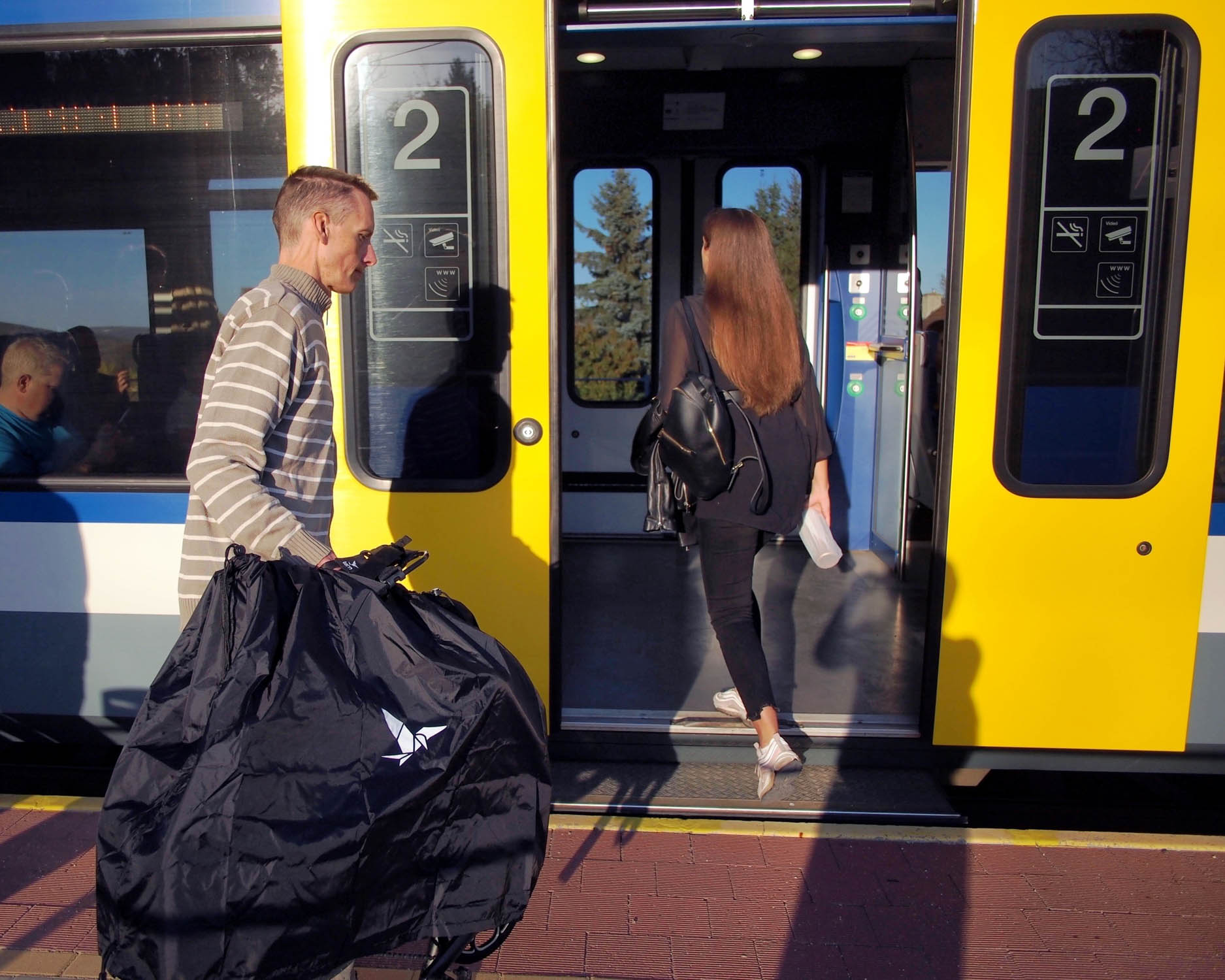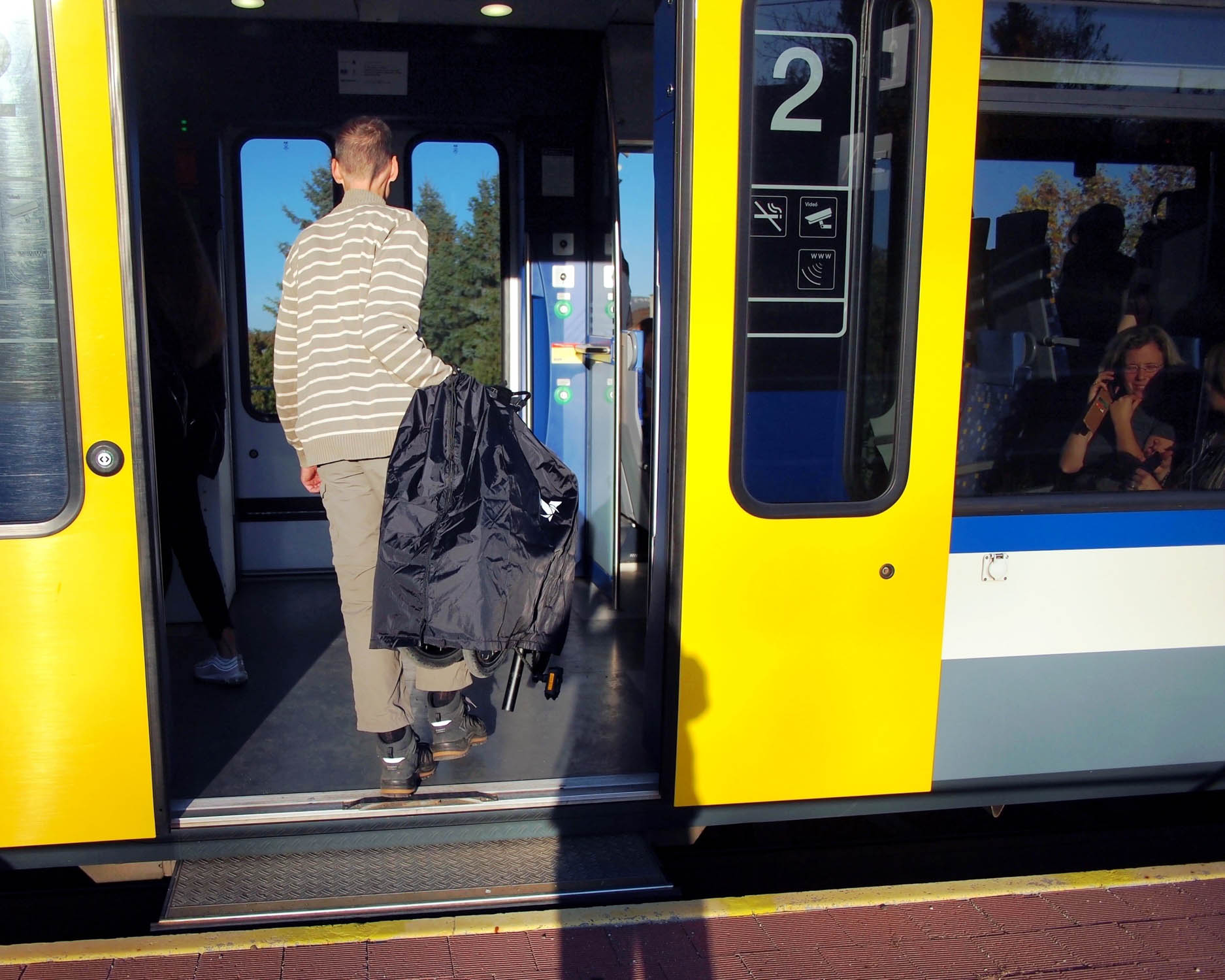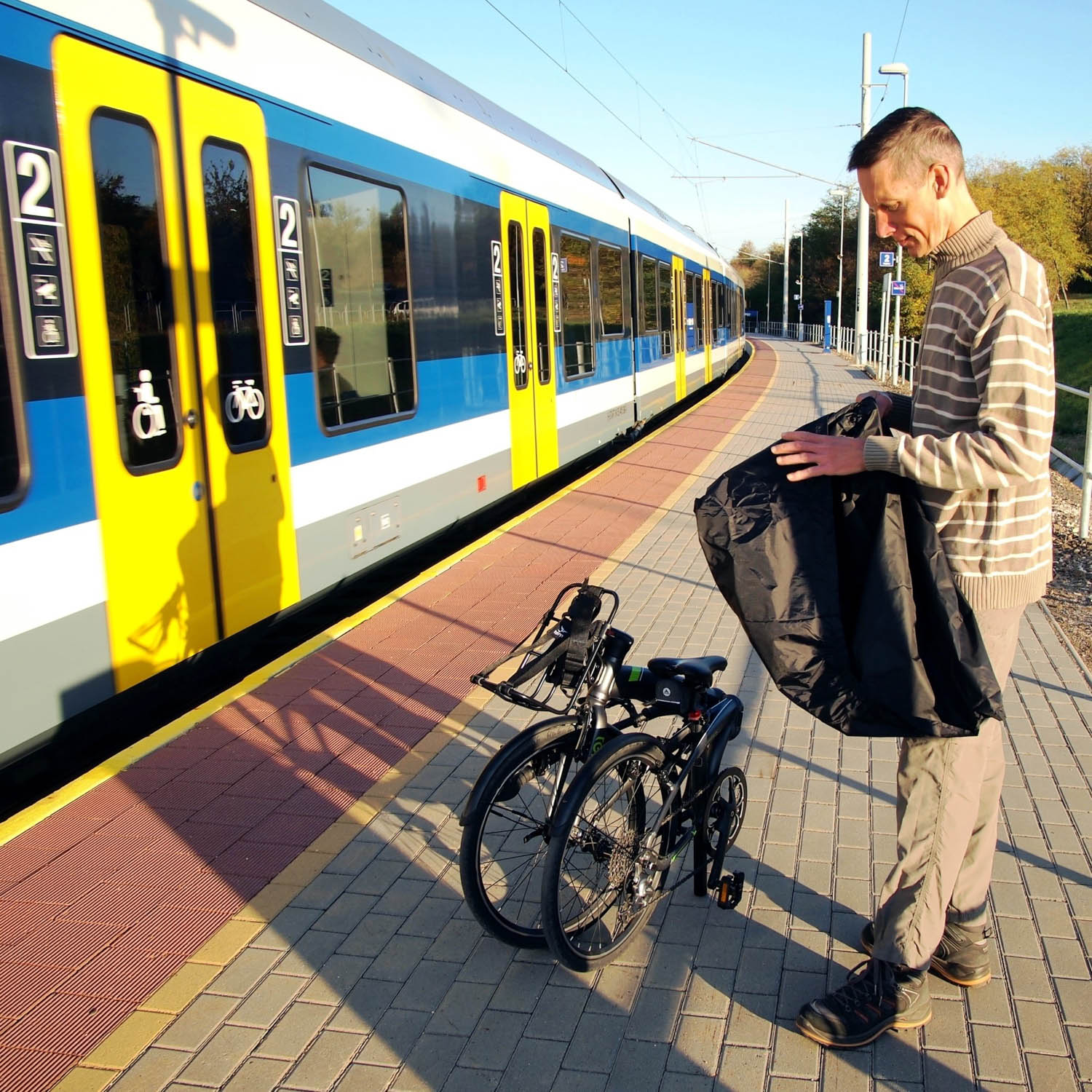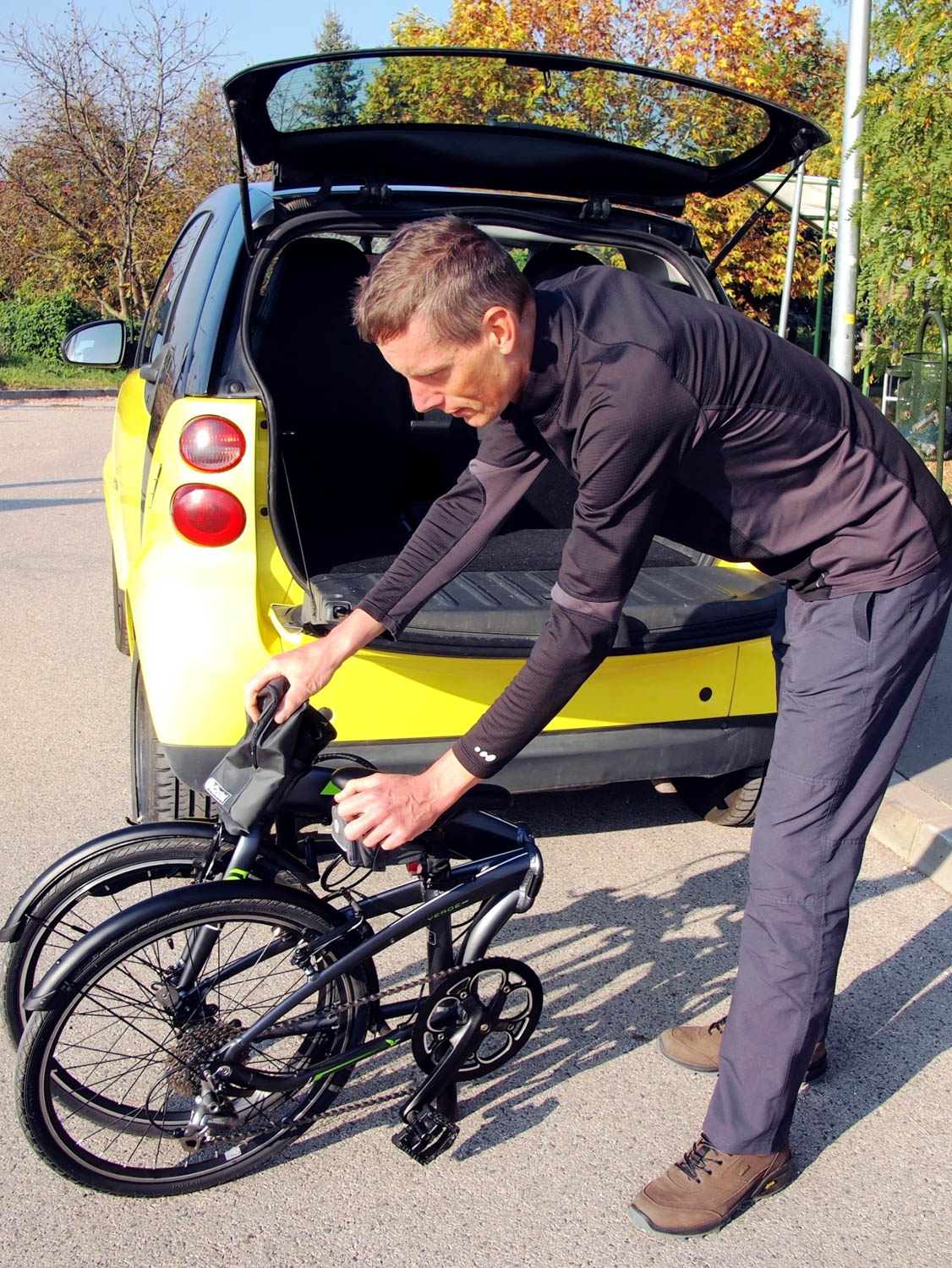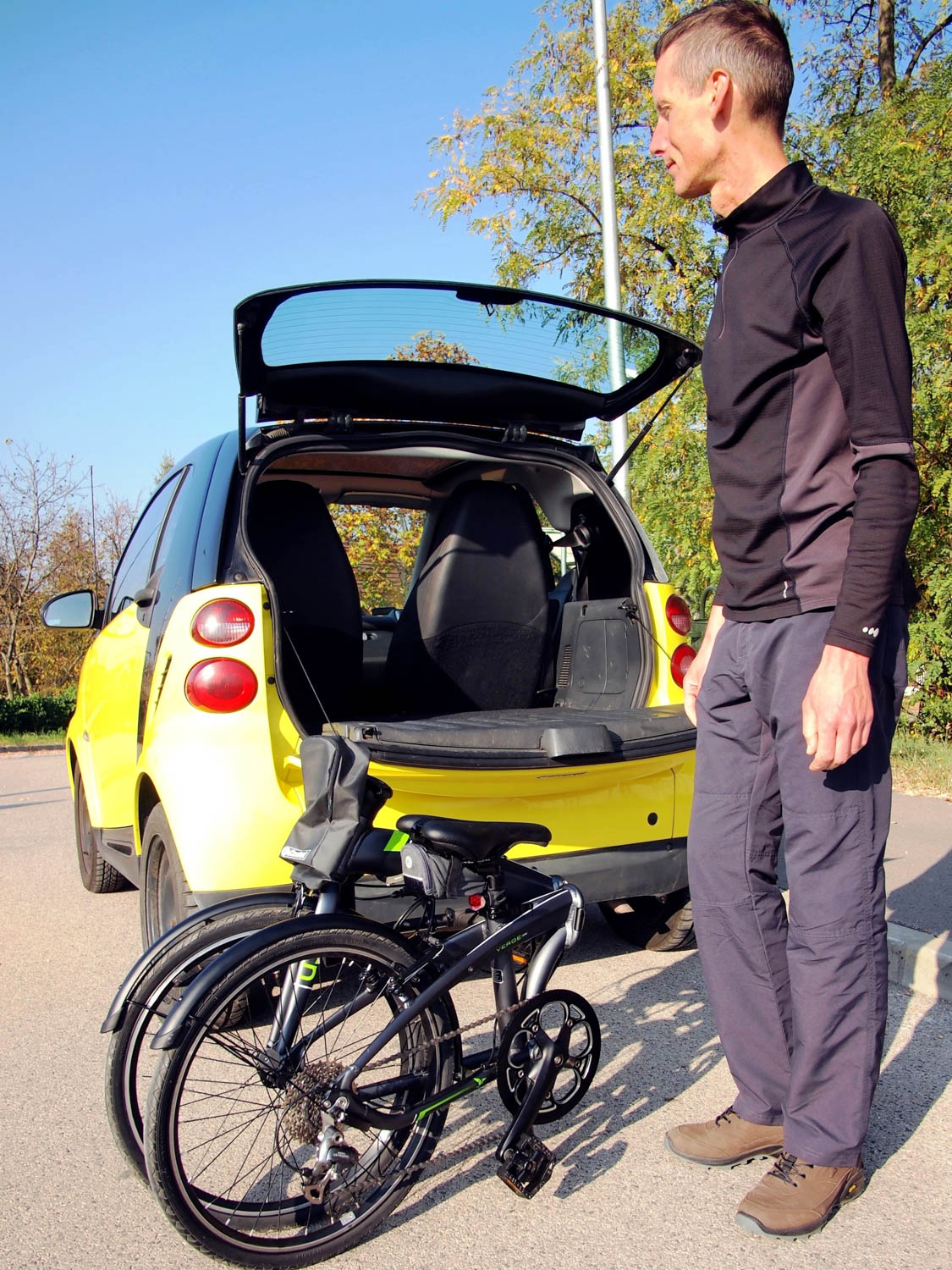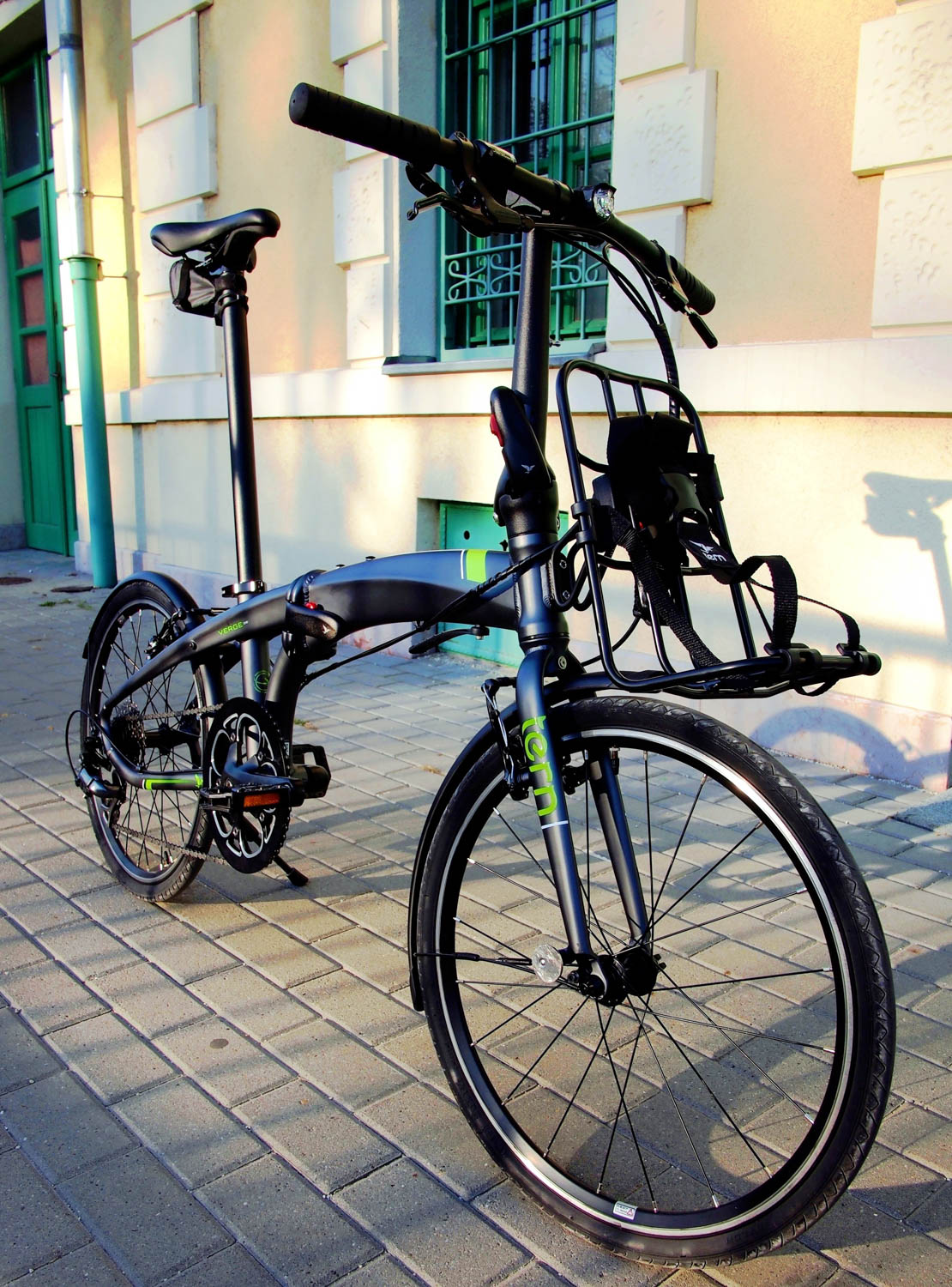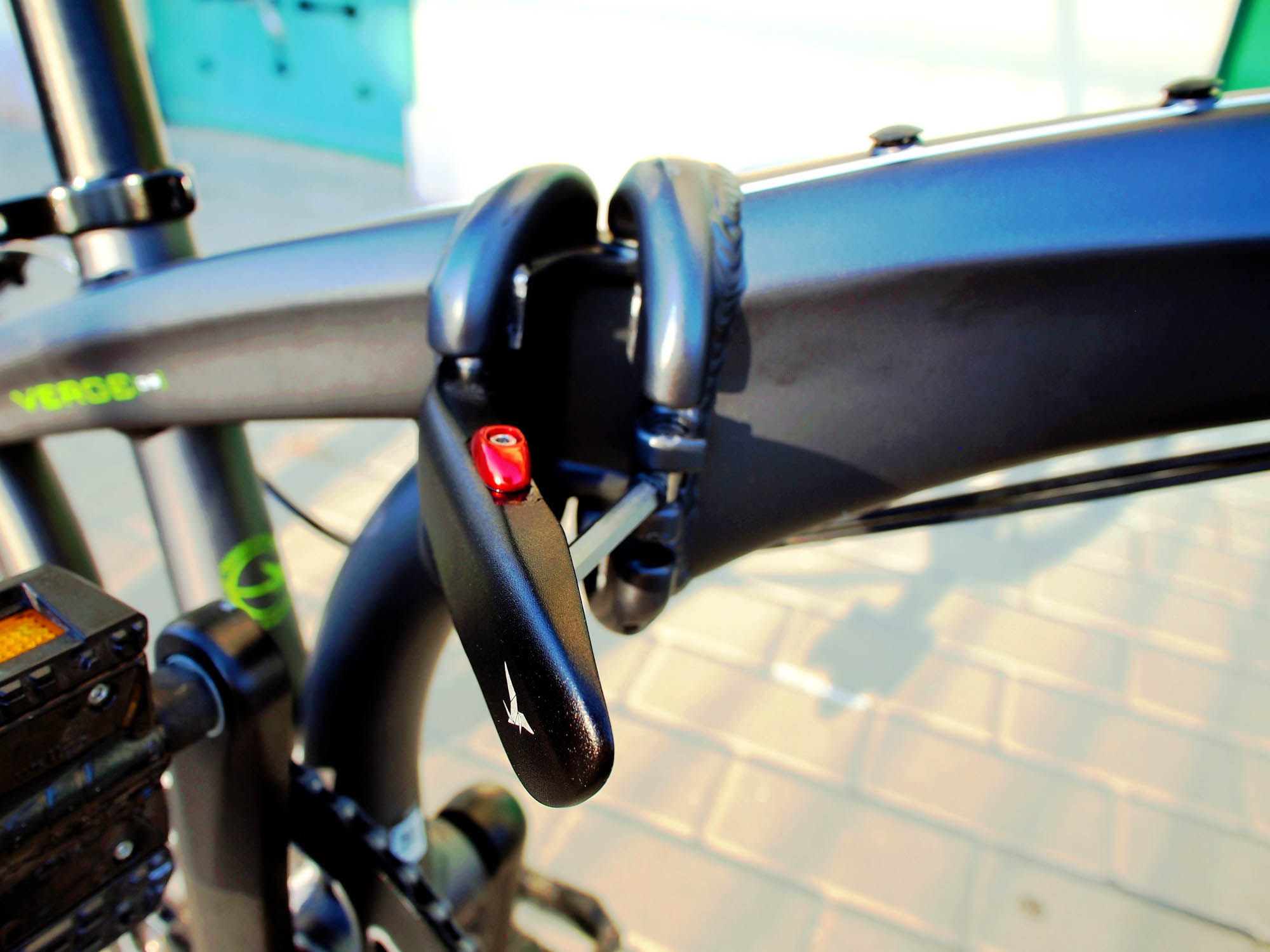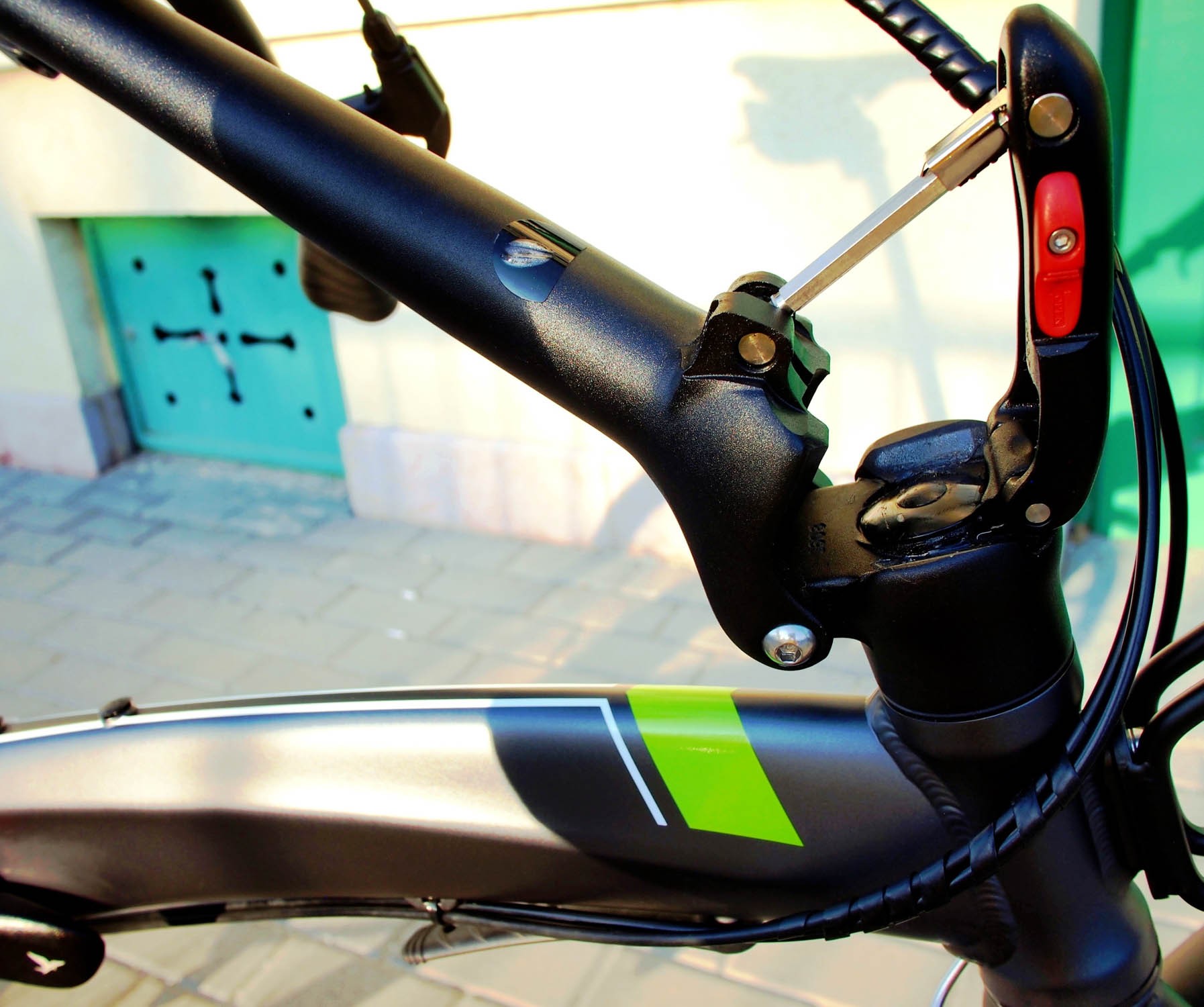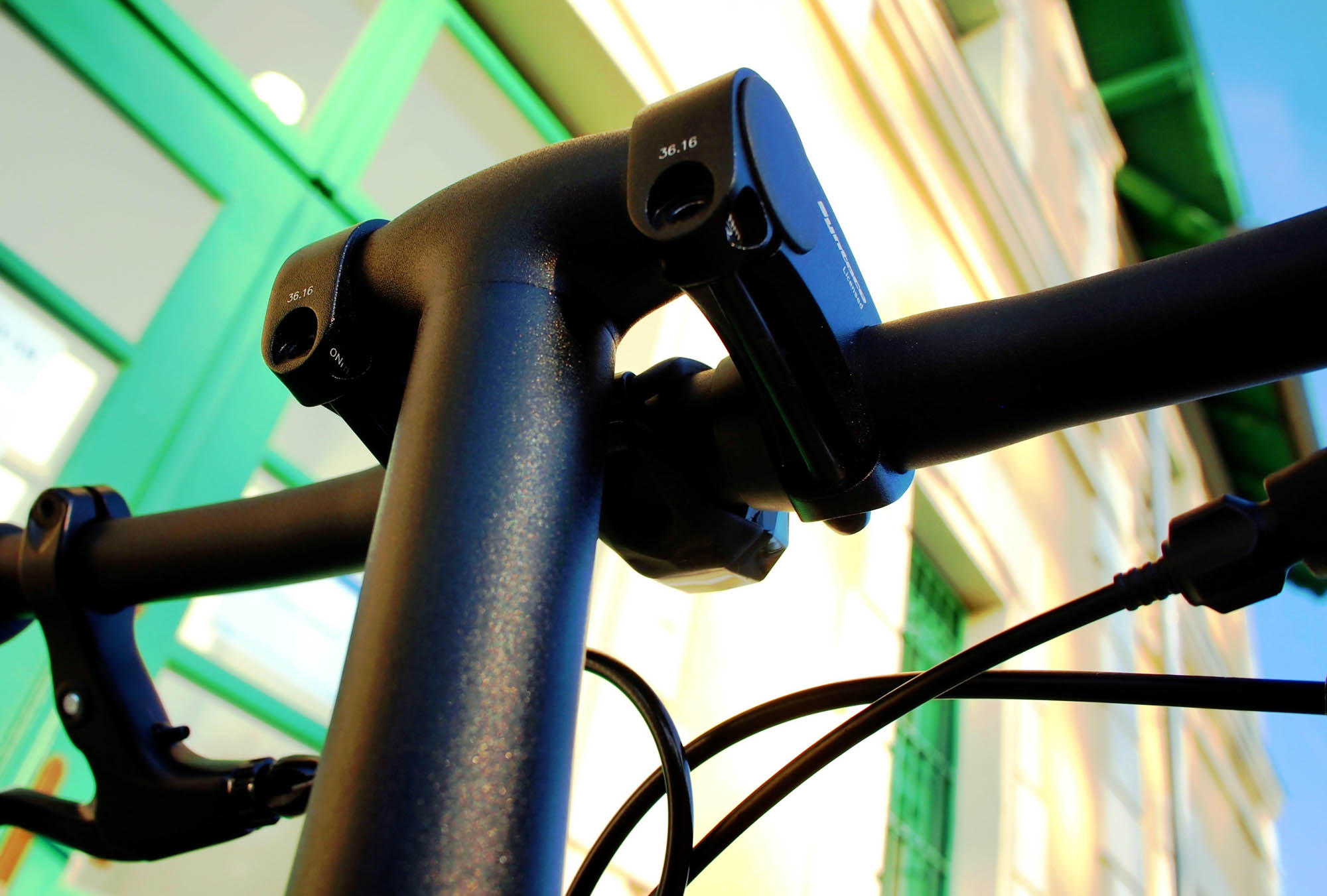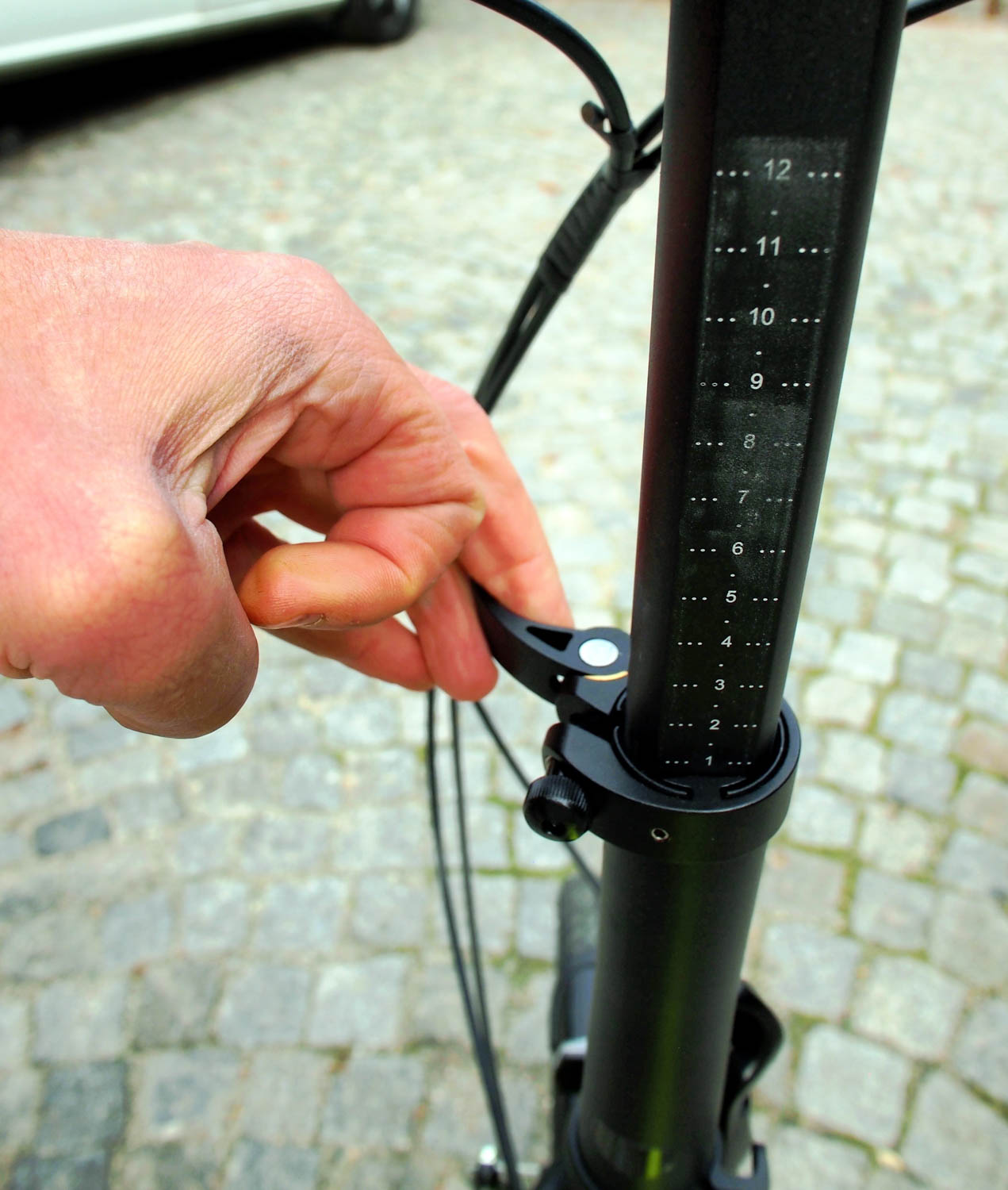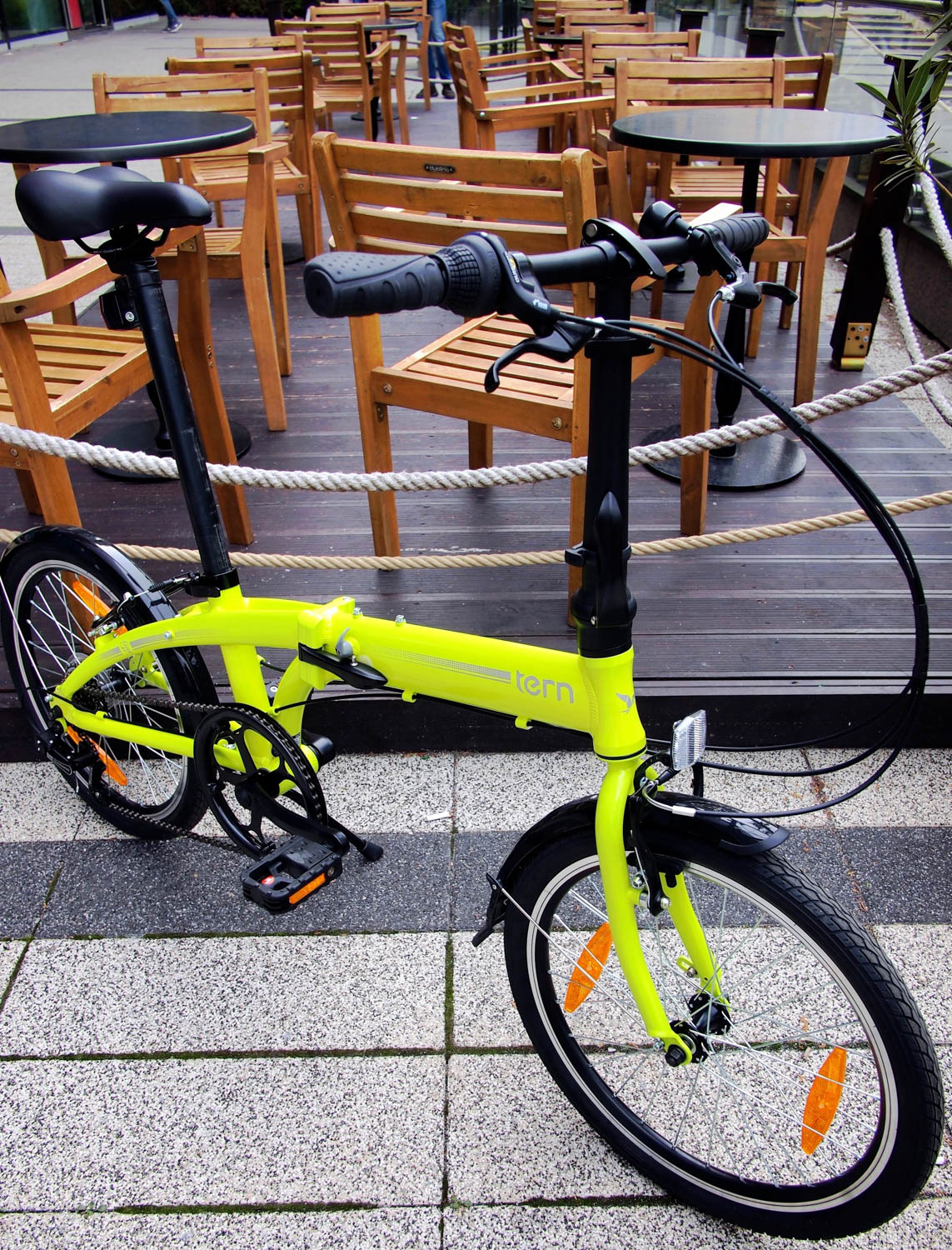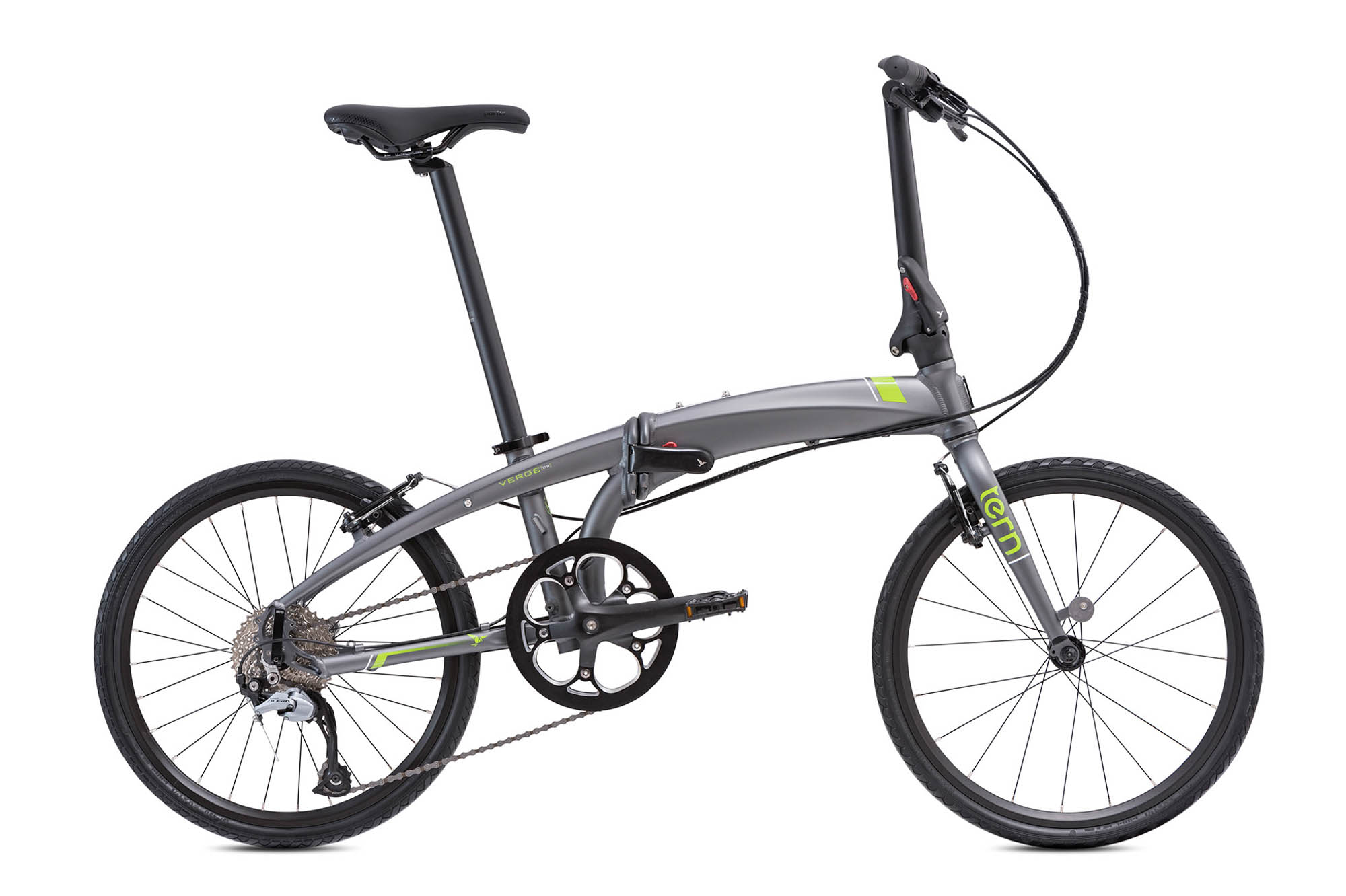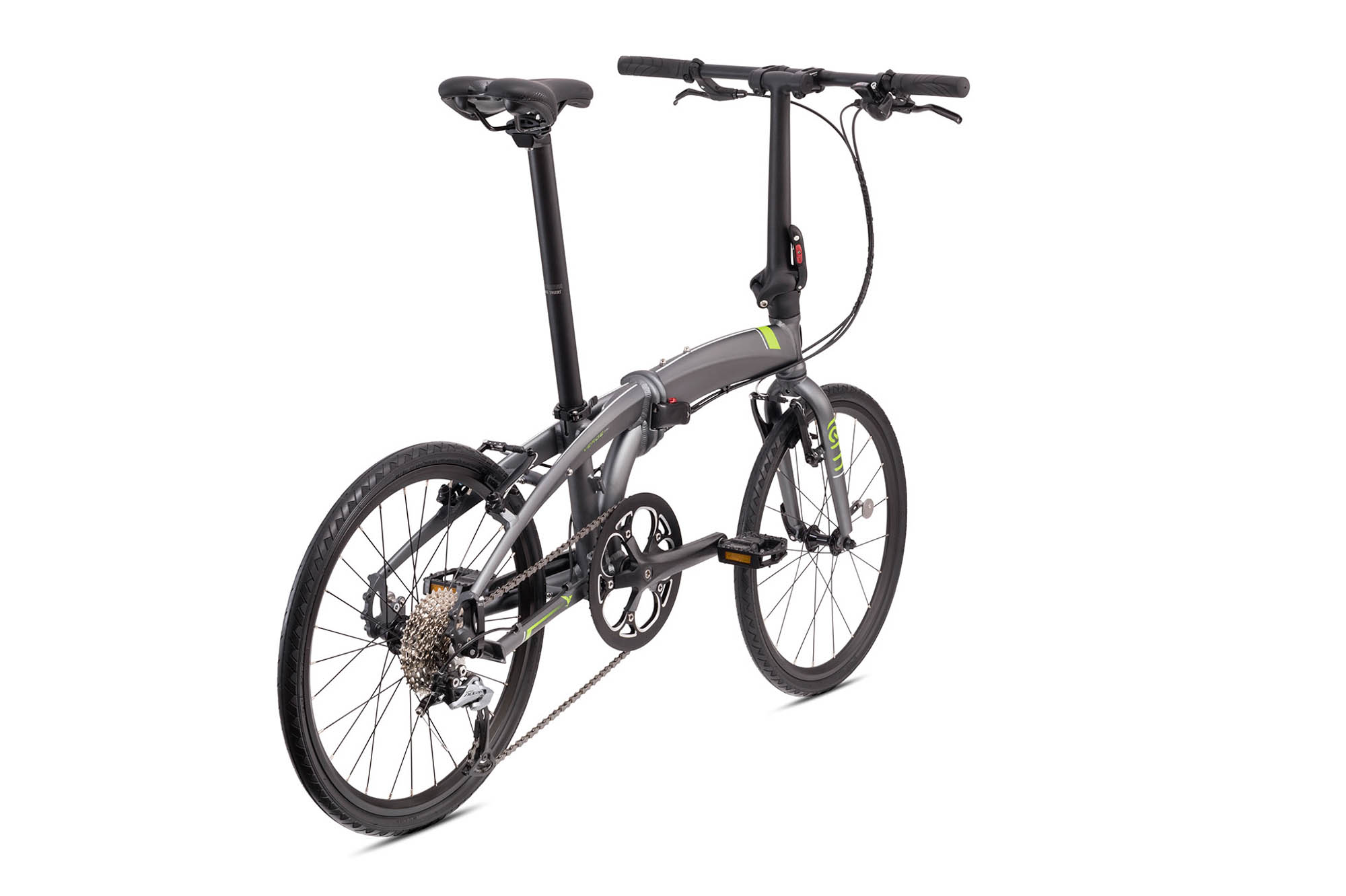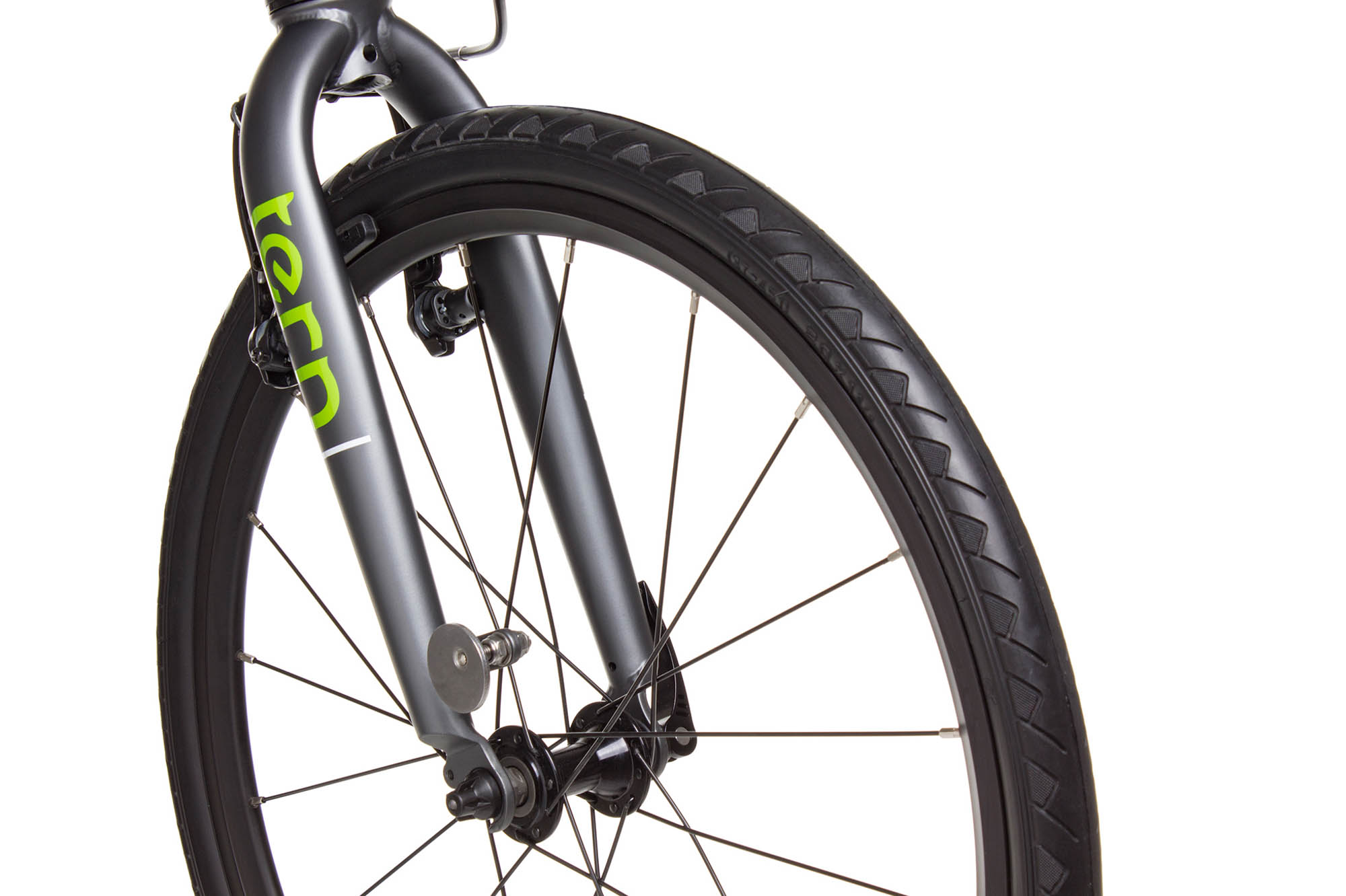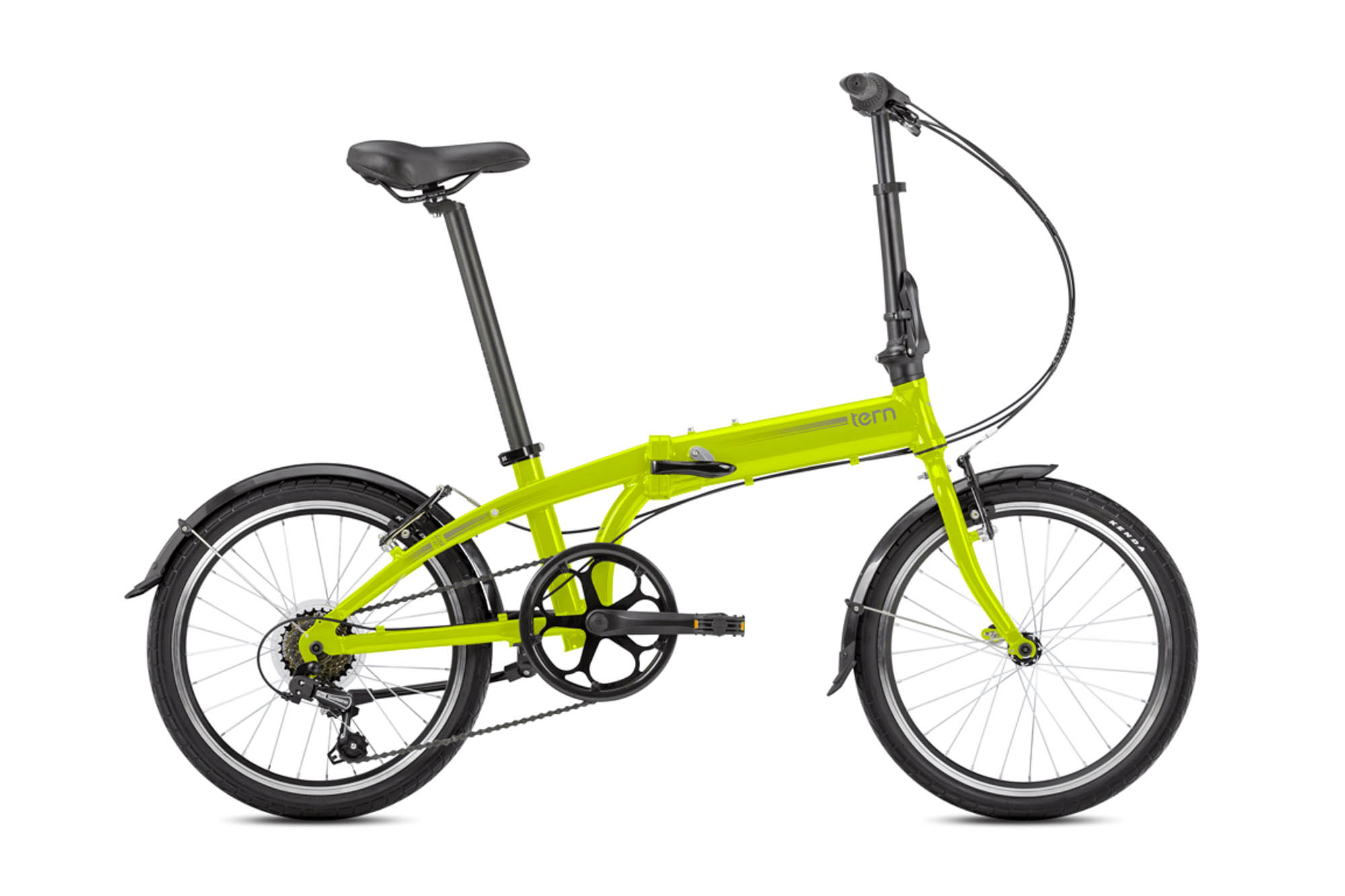What’s the idea behind a folding bike? Its main purpose is to facilitate transporting a bike on public transport, or in any vehicle for that matter. In addition, a “folder” makes storing the bicycle a breeze, whether you’re at home, in the office for at a public place. These properties make these bikes ideal for commuting, as a complement to most types of transport, especially during the first and last few kilometers of the journey. The present review underlines that folding bikes have plenty more tricks up their sleeves: for instance, they can be used for leisure activities, like short or longer excursions including bike touring. They also offer the advantage of fitting riders of different stature, hence allowing much of the family to take one out for a ride.
We had the opportunity to try and review two folding bikes from the well-established cycling brand, Tern. We’ve introduced the company and their marketing philosophy in a previous article (available only in Hungarian) in which we recounted the wide range of bikes they offer in order to facilitate mobility in general transportation. The number of fording bikes offered by Tern number over three dozen, some of them come with electrical motor assistance. The majority of the models are tailored for city riding, others for performance-oriented road riding, in addition we also find specialist bikes for long distance touring and carrying large cargo. The brand offers 20”, 22”, 24”, 26” and 27.5” wheel size options to best meet each and every design application.
Among the two bikes featured in this review the Link A7 is Tern’s entry-level model, designed predominantly as a cost-effective means of getting around in the city. The price is nearly HUF 150,000 paired with well-chosen, but “dead-simple” equipment. Nevertheless the Link A7 still manages to pack some advanced design features and technologies which are not available on folding bikes presently on the market.
For just over twice the cost, the Tern Verge D9 is Tern’s entry-level road “folder”, designed for longer rides, providing more efficiency and a higher tempo. It’s clearly aimed at the performance-minded cyclist. The Verge D9 rolls on 22” (451-type) lightweight wheels for less rolling resistance for a dynamic ride. The Verge’s frame is also more refined than what we get with the Link A7, it has a longer wheelbase and more agile handling. This allows the rider to take up a more aerodynamic body position, achieving higher speeds thanks to less air drag. The Verge is akin to a conventional road fitness bike, we might as well call it the “whippet dog” of folders. Nevertheless, it can be folded up to an easy-to-carry and transport size just like its 20” brethren in the Tern Link series.
The frames of these bikes are manufactured from strong 7005 aluminum alloy, shaped using advanced hydroform technology. Each of them is equipped with a single chainring drive system to simplify the construction and enhance practicality. Not surprisingly this is where most of the similarities end, since the two models for designed for different types of riders and riding styles. Moreover, the two-fold difference in price has a profound effect on what the manufacturer could include in view of technology and equipment.
Technology:
The two bikes in the review appear to be simple designs due to the use of aluminum frames and low-mid level equipment. It’s needless to say that the standard value schematics for conventional bikes don’t apply when it comes to “folders”. Neither of the bikes are low-end products. The technology implemented by Tern is not manifested in the choice of frame material or flashy bike parts, rather in the folding mechanism, the special design of the frame and the steering column, as well as in the myriad of features which make using these bikes functional and practical.
The Verge D9 employs the so-called “451” wheel size paired with the T-Tuned™ frame geometry. In the manufacturer words this results in a ride feel very similar to that of large-wheel conventional bikes. The N-FOLD™ hinge, the OCL™ frame joint and the Magnetix 2.0 Clip System allows for quick and compact folding for an easy to carry and transport package. The folding action is provided by the spring loaded, bearing assisted mechanism, which in turn (pun intended!) offers a large surface area for added frame stability and durability. Operating the OCL hinge system is a joy compared to other folding bike models available on the market, which tend to be clunky and slow to say the least.
The PHYSIS™ 3D steering column is a proprietary design, complemented by the SYNTACE VRO adjustable stem, thus allowing for outmost stability and precise fine-tuning of the handlebar position. Finally there is the DOUBLETRUSS™ 3D frame design which helps to counteract torsional forces while pedaling, decreasing flex in the frame, while providing more stability for the rider even under hard efforts. This in turn improves the efficiency and allowing for a more dynamic ride experience. The above-mentioned advanced innovations can only be found on Tern bikes.
The Link A7 offers a smaller number of technologies from the Tern arsenal, nevertheless the most essential ones are fortunately present even for this entry-level model. The frame joint is a previous version of the OCL™ called the FBL™. It employs bearings so it’s easy to operate and the FBL is a durable, time-proven design. The Link frame only differs slightly from Verge, the dissimilarities are primarily in the geometry. It retains the advanced DOUBLETRUSS™ 3D frame design hence making the light but very stable bike. Although the Link A7 is missing a proper handlebar stem, the length of the steering column is adjustable, offering the possibility to change the rider’s body position.
Out riding…
At this point it should be mentioned that previously I’ve been riding several “folders”. In my experience both Tern bikes are head and shoulders above the competition in terms of frame stiffness and stability. Handling is firm and there no trace of the vagueness experienced on other folding bikes available on the market. The Tern bikes in this test feel more efficient as pedaling forces are generally converted to forward motion as opposed to constant flexing of the frame and the handlebar.
Arriving at the destination
In fact, it may be a realistic strategy to get of the saddle to sprint when the light turn green, a feat only be attempted by the experienced and brave rider on most other “folders”. We quickly reach 30km/h on the Verge, and such brisk tempo be maintained for quite a distance thanks to the relatively aerodynamic body posture. On the other hand, the Link A7 was not designed for outright sprinting in mind. It’s simply down to the plush and wide tires and the more comfort-oriented riding position.
Despite the smaller wheel size, these bikes do not handle much different compared to a conventional bike. Many riders complain about a bumpier ride aboard “folders”, but I didn’t notice serious limitations in this respect. Yes, the handling of both Tern bikes are a tad more “jittery” than on you average “pushbike”, and bigger potholes should be avoided for both the sake of the bike and the rider. Otherwise the differences compared to bikes built with larger wheels are not as stark as some believe. I presume the long seat post and well-designed steering strut may help comfort while still retaining the well-mannered handling. While at the seat, it should be added that the Tern Porter™ saddle has a very comfortable padding below the nose, just in front of the seat tube. This feature lets the rider to carry the bike by shouldering the saddle, e.g. when taking the stairs. This proved to be very practical, and I’d say most city bikes should be equipped with this type a saddle!
I ride both these “folders” just like I would on board my trusty old road rig I use for running errands in the streets of Budapest. This entails riding between the lanes, along cars, jumping curbs. This may not be wholly according to the traffic regulations, but it’s undeniably very efficiently. The Verge is more conducive for this type of riding than the Link, as the frame geometry is more agile, the wheels are easy to accelerate, and the riding position is on the sporty side. This type of riding may not be everyone’s cup of tea. So the Link A7 caters for a different type of rider, it offers greater comfort and more forgiveness on uneven road surfaces. Tern is quite aware of the fact that there are different people seeking the practicality of a folding bike, hence they cater to each and every target group with a special type of “folder” that best suits their needs and expectations. The result is that most riders will find an ideal companion in one of the many Tern bike models presently on the market.
Taking the train
The gear range on the Verge D9 is considerably wider than on the Link A7. However – during normal city riding – this proved to be of little hindrance. The 1-2 extra gears on each end of the spectrum would only be used during atypical circumstances: when speeding to catch green lights or tackling very steep gradients at crawling pace.
On the other hand, both bikes offer rim brakes, which leave something to be desired for a rider who is used to modern hydraulic disc brakes. However, if you are coming from a more traditional cycling background, the V-brakes on the Verge will guaranteed to please, the Link is somewhat more ragged due to the lesser quality cable housing. This could be substituted anytime, and it doesn’t involve a big expense either. By the way, the Verge D9’s frame could in theory take disc brakes, but the fork unfortunately is not compatible, so an upgrade is not a straightforward option.
Getting the folding bike in and out of a tiny car
The good news is that both these bikes are quite capable when loaded with a considerable amount of gear. Not only are they sufficiently strong for carrying luggage, but handling remains adequate, much like on a proper touring bike. From the wide range of luggage accessories offered by Tern, we tried out the Kanga front rack, the matching Luggage Truss™ Lock & Load mount and the practical RidePocket™ handlebar bag. These accessories all mount to the front of the bike, and if they do not upset handling, the low position of the rear rack mount certainly won’t be causing any distress for the rider. There are several options when it comes to bags and baskets from Tern, and their test would merit another write-up on these pages.
How are Tern “folders” different from those available at big box stores? (You can buy folding bikes at a much cheaper price, but are they the real deal?)
Now we’ve arrived at a sensitive topic. Do the Tern bike in this review represent a good value, especially considering that folders can be purchased at less than half the price of the Link A7, and comparably equipped aluminum frame models usually go for 30-40% less from non-specialist brands? When I examined the market for such bikes, I found that the folded size of the same wheel diameter is generally similar, and the time it takes to perform the “origami” is also in the same league regardless of price. Hence the difference between bikes is not in the way they fold per se, but in the execution of the folding mechanism, the ease use, the ergonomics and the quality of the construction. Since most users will be folding and unfolding these bikes on a daily basis, the sentience of the procedure does matter a great deal, and it’s likely to have an effect on how often the person would actually choose to use the bike.
Tern developed the an industry-leading hinge mechanism called the OCL™, a precision “instrument” employing bearings and springs to aid the folding process. These are very elaborate mechanical joints which are truly a joy to operate. The OCL™ also provides a large surface area that leads to a stronger and more stable structure. When I reported on the surprising stiffness of the bikes on test, I was probably complementing the OCL™ hinge as well as the advanced frame technology. On the other “folders” I tried, the folding mechanism was far from practical, the force or time required to operate them was greater and frame stiffness generally left something to be desired.
Compared to conventional bicycles, the complexity of the frame and the handlebar column hinge elevates the price of folding bikes by a great margin. Even a budget folder is much more expensive than an entry-level department store city bike. A more advanced hinge joint increases the price even further. The maximalist approach adopted by Tern does not end at the joints, it is evident in all aspects of the bike. This is where a comparison with budget “folders” from non-specialist brands become even more unambiguous.
Most cheap models utilize parts that were not tested for such an application. This is why one often experiences crank arms creaking under load after a wet ride, becoming loose on a weekly basis, or handlebars which make popping sounds when ridden out of the saddle. In many instances the tires on “folders” offer poor grip on wet roads and brakes are not much more than sluggish decelerators. Finally saddles are often chosen for their looks and price, and riding them for longer durations evoke the Spanish Inquisitor for most riders.
On the other hand, designers at Tern are cyclists themselves, who know what makes riding a bike enjoyable. They care greatly about what the consumer holds about the brand, and will make sure the above-mentioned problems will not surface as time goes on. All in all, this is why Tern bikes cost more. Last but not least, the Tern customer gets a 10 year warranty on the frame and fork which is unrivalled on the market for folding bikes.
One size fits all?
One of the design features of folding bikes is the “unisize” frame. Although Tern doesn’t balk this trend, the brand does everything in its power to make bikes that are adaptable to riders of different body proportions. First of all bikes come in several wheel sizes which allows for riders of large and small statures alike to enjoy a natural riding position. Then in the case of the Verge D9 we have the VRO adjustable handlebar stem to place the grips at the idea place for comfort and control. Even though the Link A7 forgoes the conventional stem design for a direct handlebar to steer post mount, the steering pillar offer approx. 12 cm of tool-free height adjustment. This allows the cyclist to swiftly raise or lower the handlebar according to body proportion or riding style.
Even with the handlebar adjustment found on the Turn bikes (not generally provided by other folding bike manufacturers), short or tall riders at the extreme end – typically below 150cm and over 190cm height – will have to make a compromise when on board a “unisize” frame design. This we think is a small sacrifice compared to the advantage of having so many types of riders being able to use a single bike. So typically most members of a family will be able to set out on either the Link A7 or the Verge D9, there is no need to get a separate “folder” for each and every person in a household.
What else do we get with these bikes?
Being a folding bike specialist, Tern build its brand image upon offering the most comprehensive solutions for personal mobility. When we purchase a Tern bike, we get access to a wide variety of proprietary bike accessories that serve to enhance practicality and the ride experience. The bike frames are designed to be compatible with both front and rear racks, there are several model variations for different purposes. In the case of the Verge D9, the rider can mount two types of rear racks – one for touring and the other for general riding. There is also a front pannier rack and a special mount on the head tube called the Luggage Truss™ Lock & Load. The latter can be used to attach several types of baskets and bags with the industry standard KlickFix™ mount system. Alternatively a specially designed rack called the Kanga™ can also be mounted on this front quick-release console, in which you may carry your rucksack, shopping bag or whatever you need to carry that’s under 7kg. Tern also offers a wide variety of bags which are all fully compatible with the racks mentioned. In addition, all Tern bikes accept fenders (mudguards) that make riding in wet weather a much better experience.
Recommendation
If you are in need of a folding bike for riding around the city, the Tern Link family with 20” wheels and relatively wide tires offer the best solution in terms of foldability, comfort and practicality. The Link A7 in this test is the entry level model, and there are a half dozen bikes with the similar attributes offering a higher level of equipment, including wider gear ratios, disc brakes. If you don’t need the bells and whistles and just want to get from A to B, the Link A7 cannot be faulted. We think it offers a good value for money, even if some folders on market can be had much cheaper.
The main question for this comparative review is whether the Verge D9 costing twice the price of the Link A7 can offer a comparatively greater ride experience? This reviewer is not wholly convinced, even though he is admittedly a performance-oriented cyclist – the type of rider the Verge line of “folders” target. The Verge is undoubtedly a lively bike, it offers agile handling reminiscent of better road fitness bikes. The riding position is quite sporty to match the snappy nature of the bike, and the overall weight is also reasonable. Despite being a road model, it can carry plenty of luggage, so it scores well on the scale of practicality. In spite of all these merits, we think most riders looking for a “folder” don’t necessary require these attributes. They are just fine with a bike that is convenient and safe to ride for the given distance, one that can be folded when taking public transport, when the bike needs to parked or stored. Therefore we recommend the reader to visit the Hungarian Tern dealer where the staff will be happy to assist you in selecting the best “folder” for your needs and expectations.
The recommended retail price of the Tern Verge D9 is HUF 299,000, while the Link A7 will set you back HUF 147,000. You can find out more about these and other Tern bike models by clicking on the following links
The article about the Tern brand is available in Hungarian here.
Hungarian distributor for Tern bikes: www.tern.hu.

